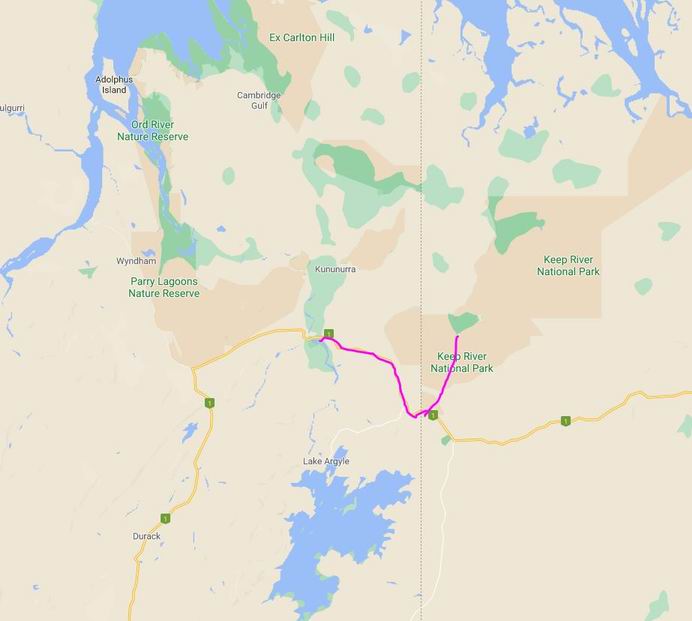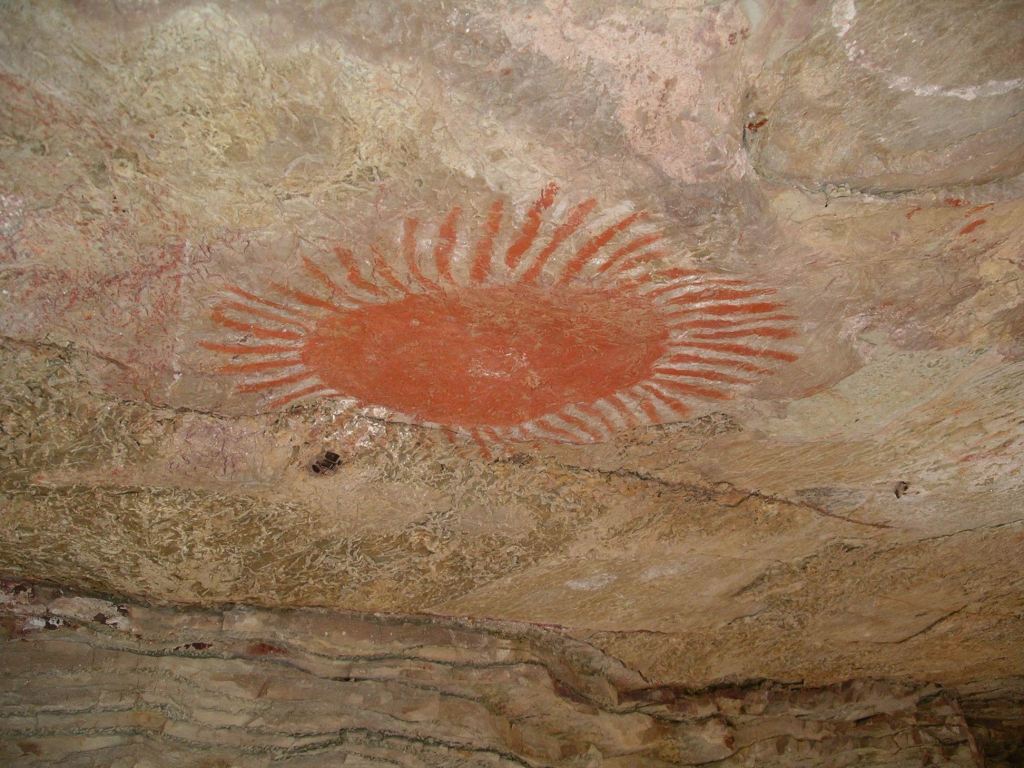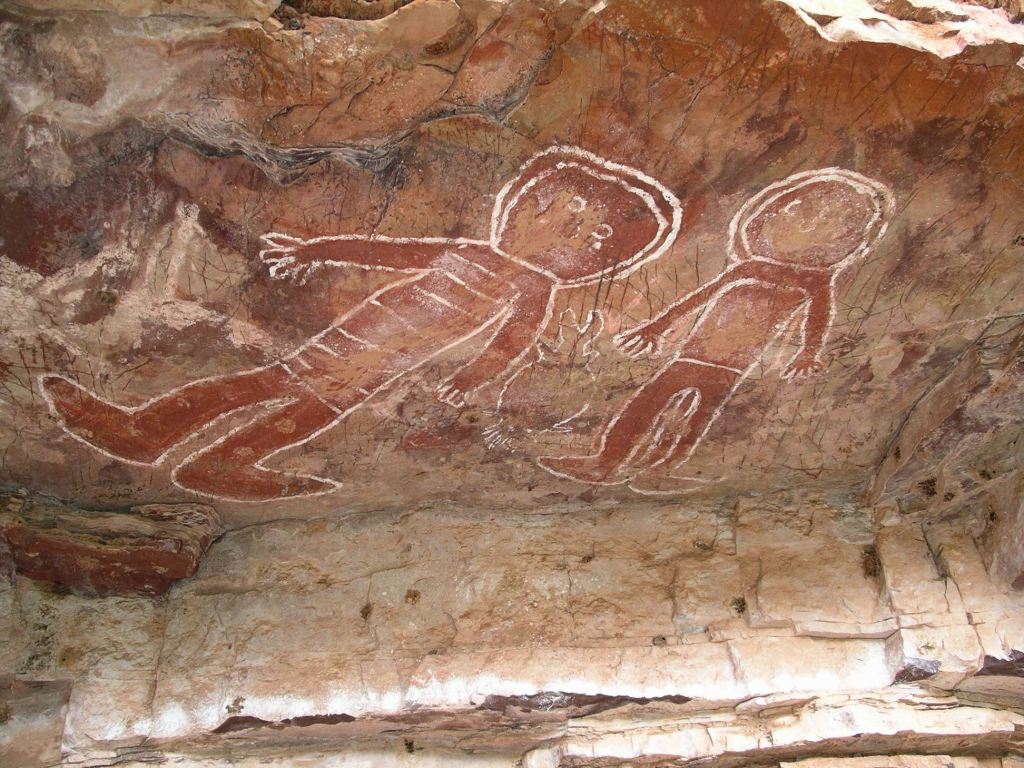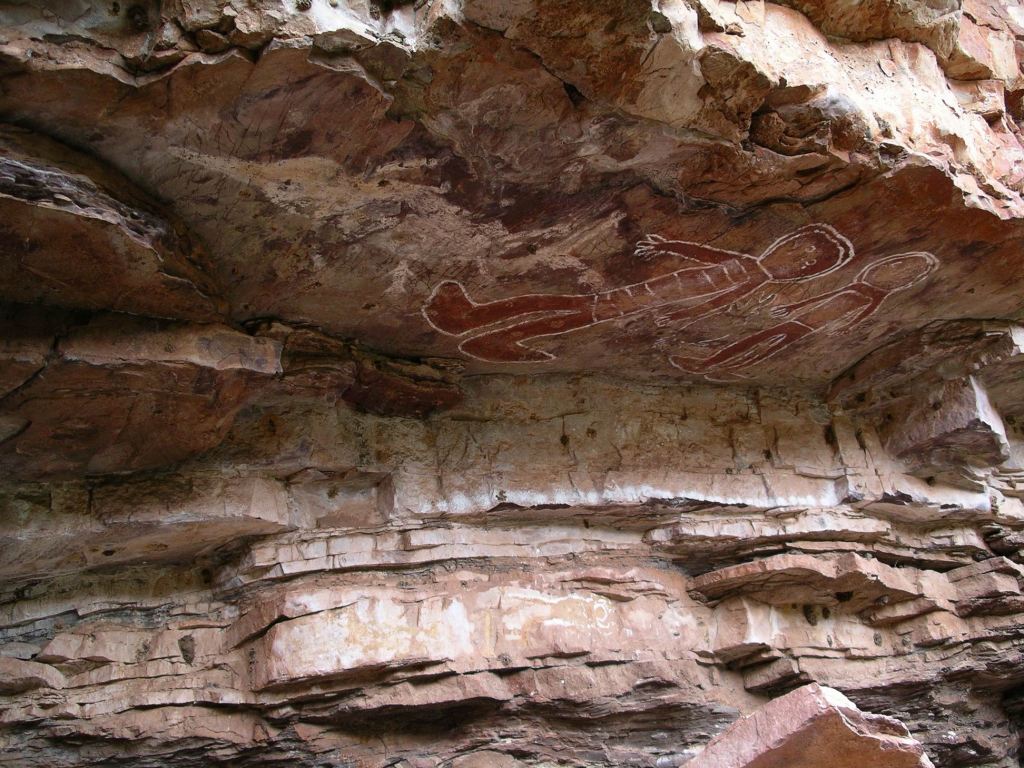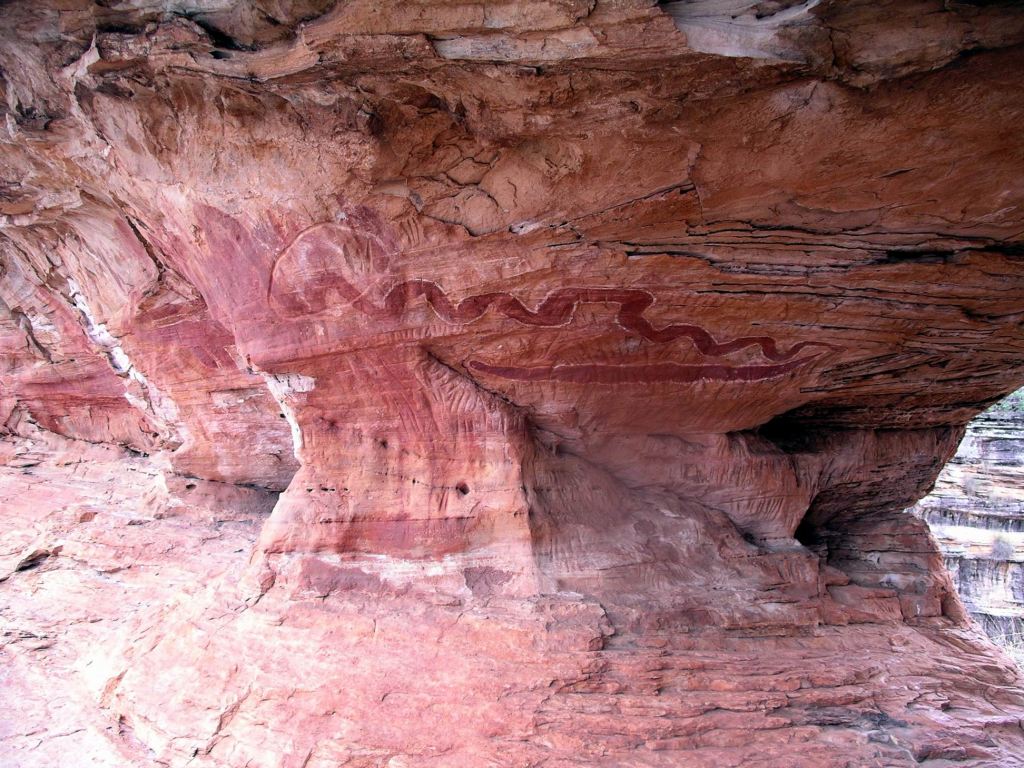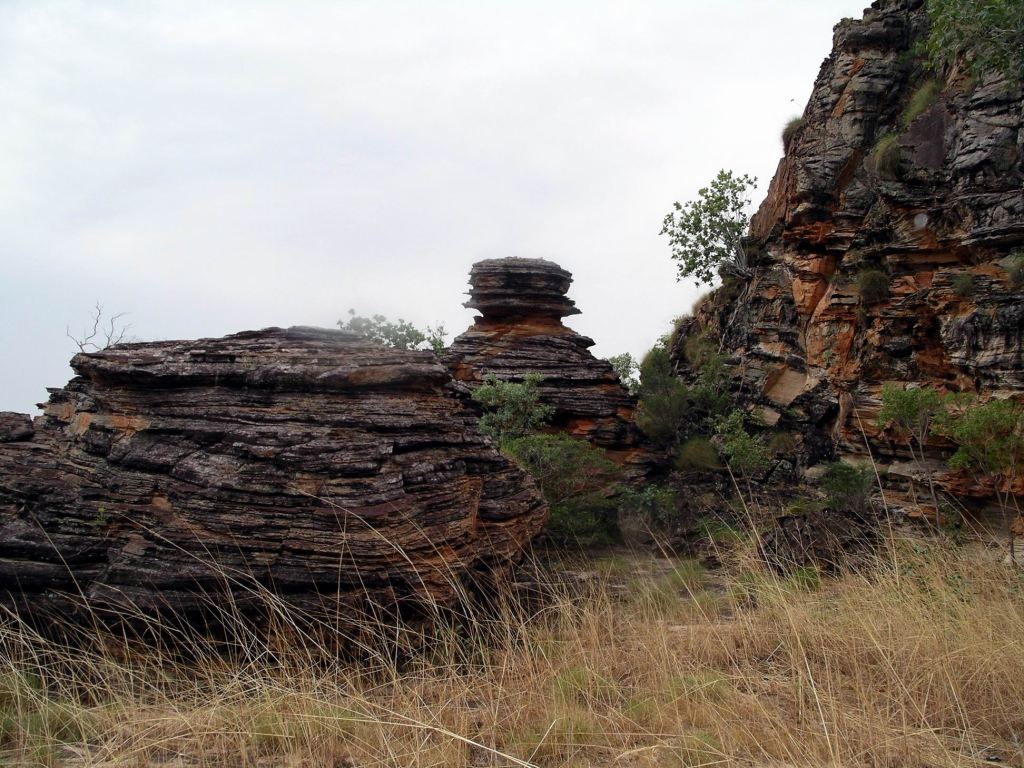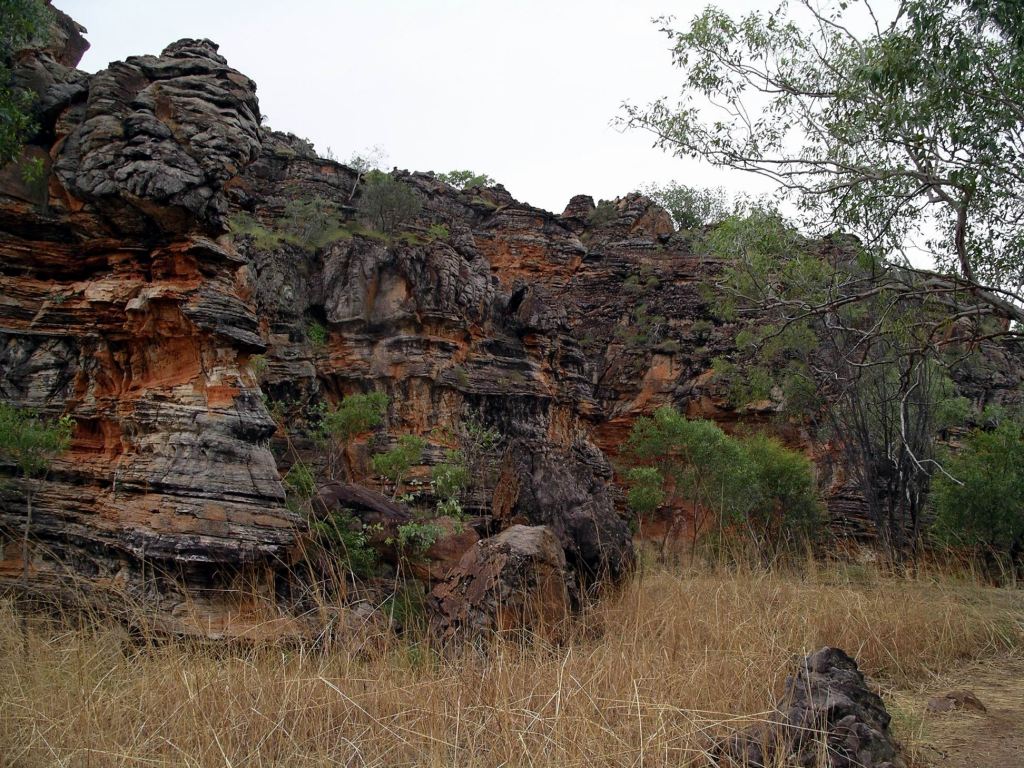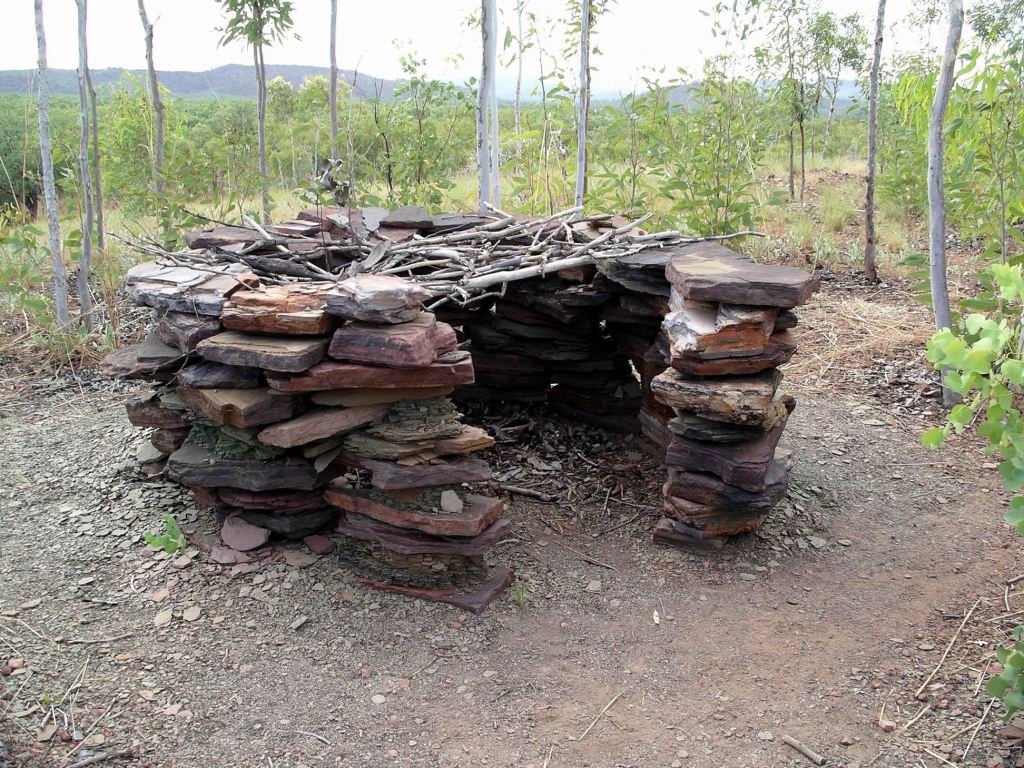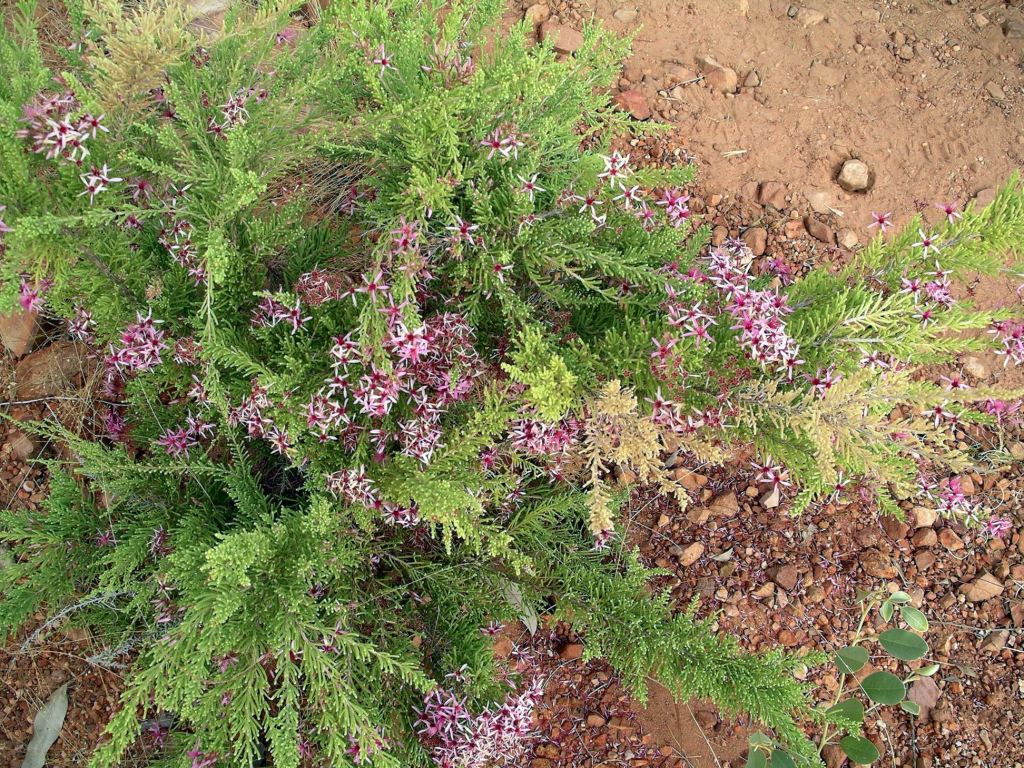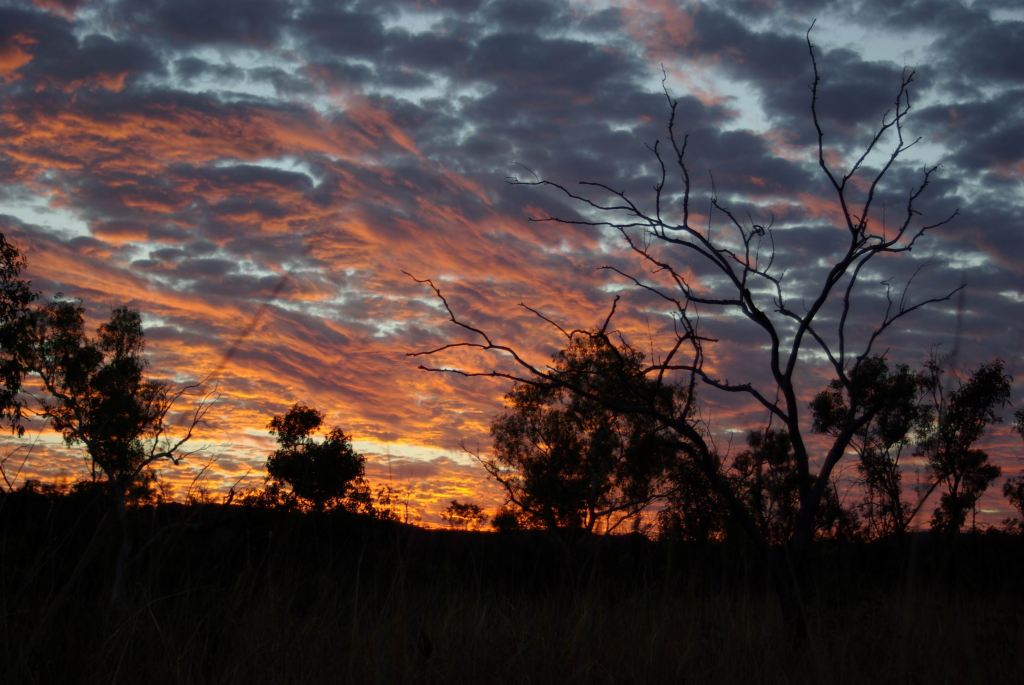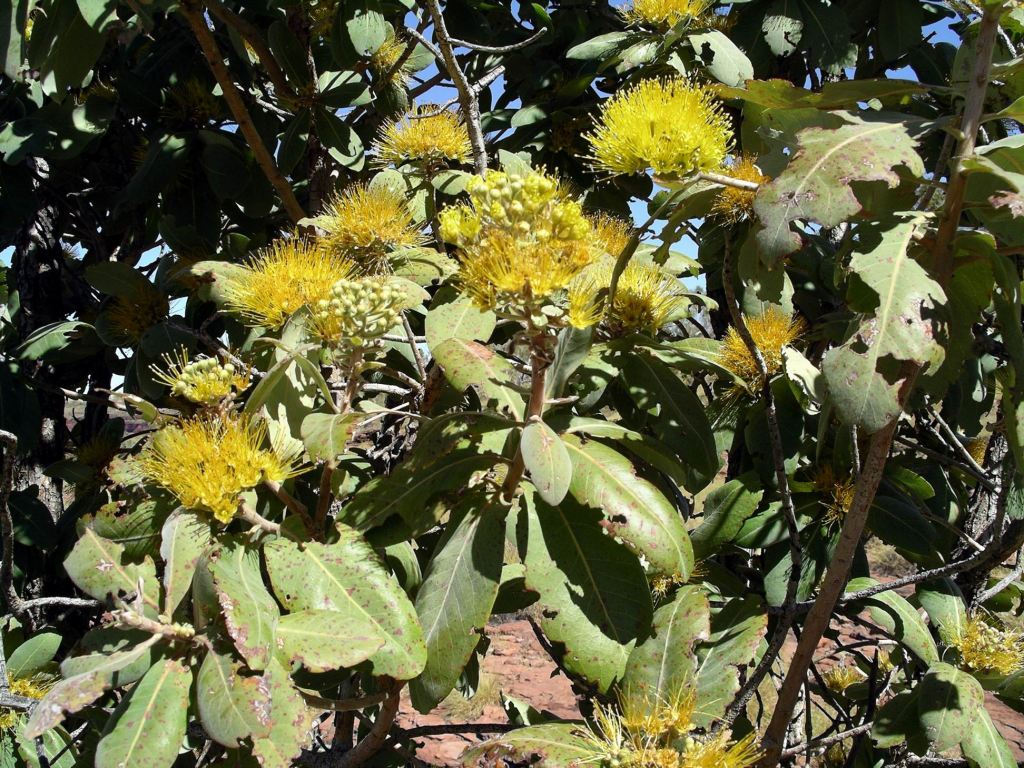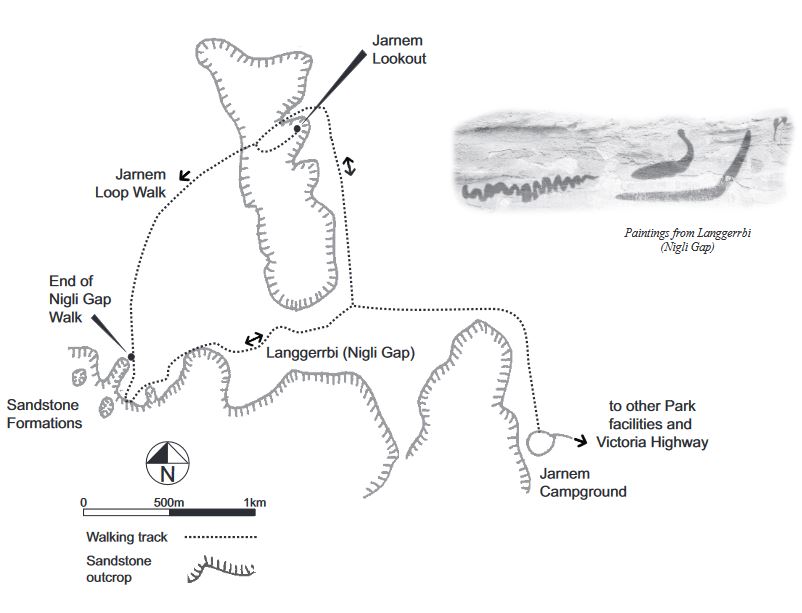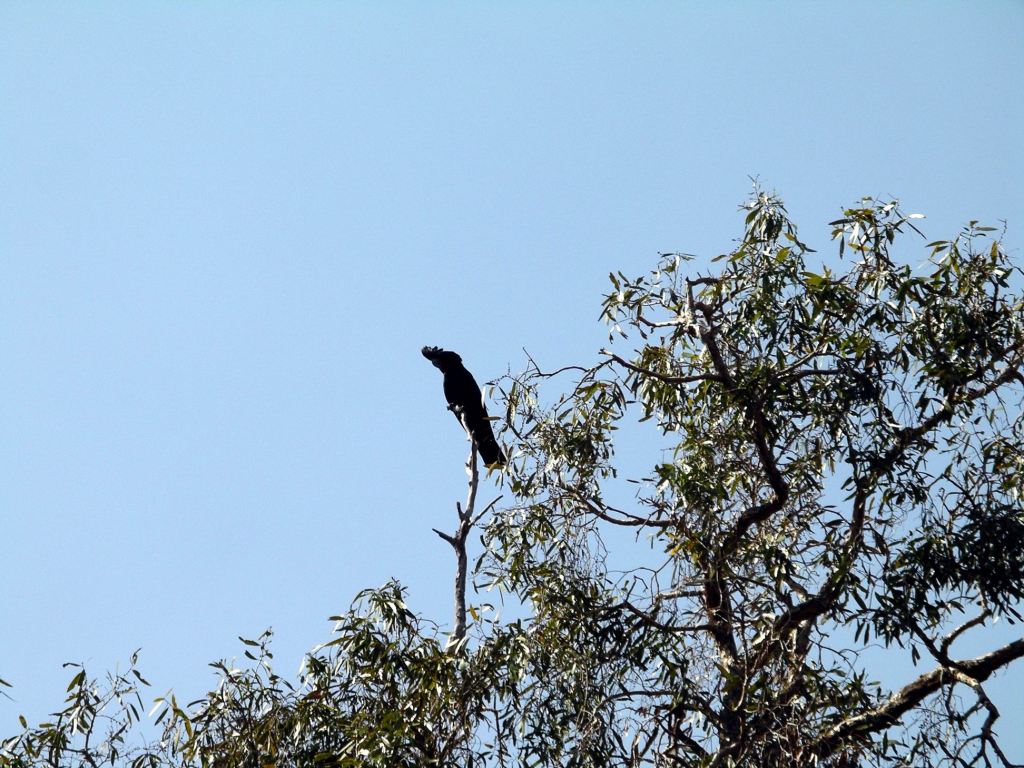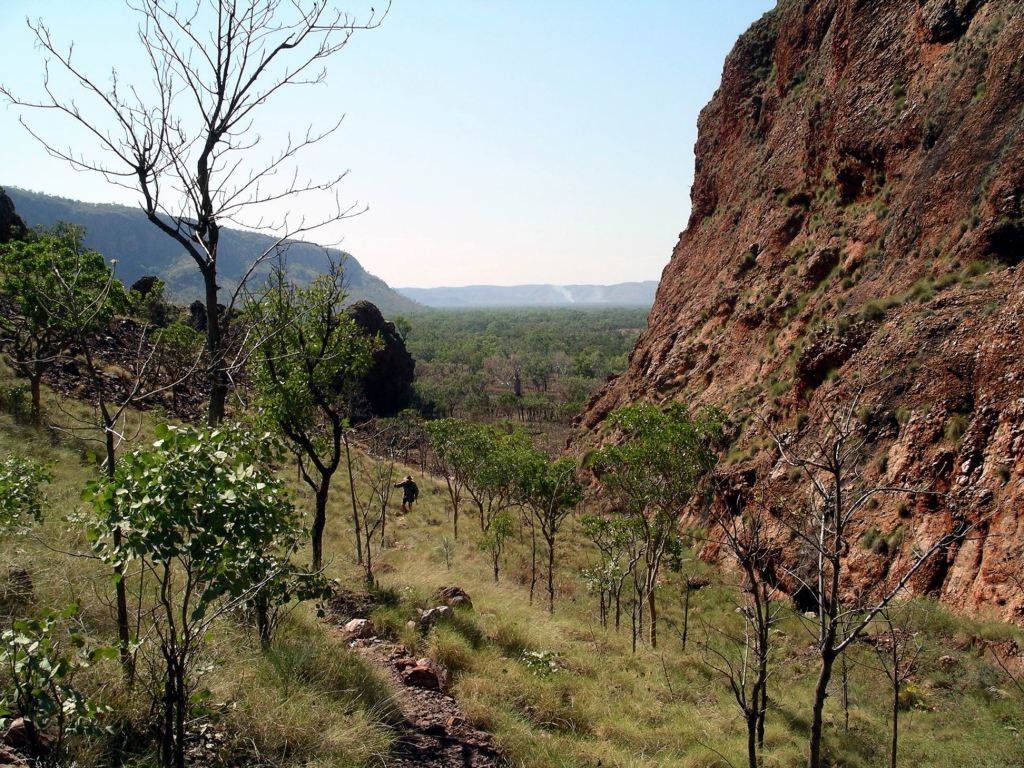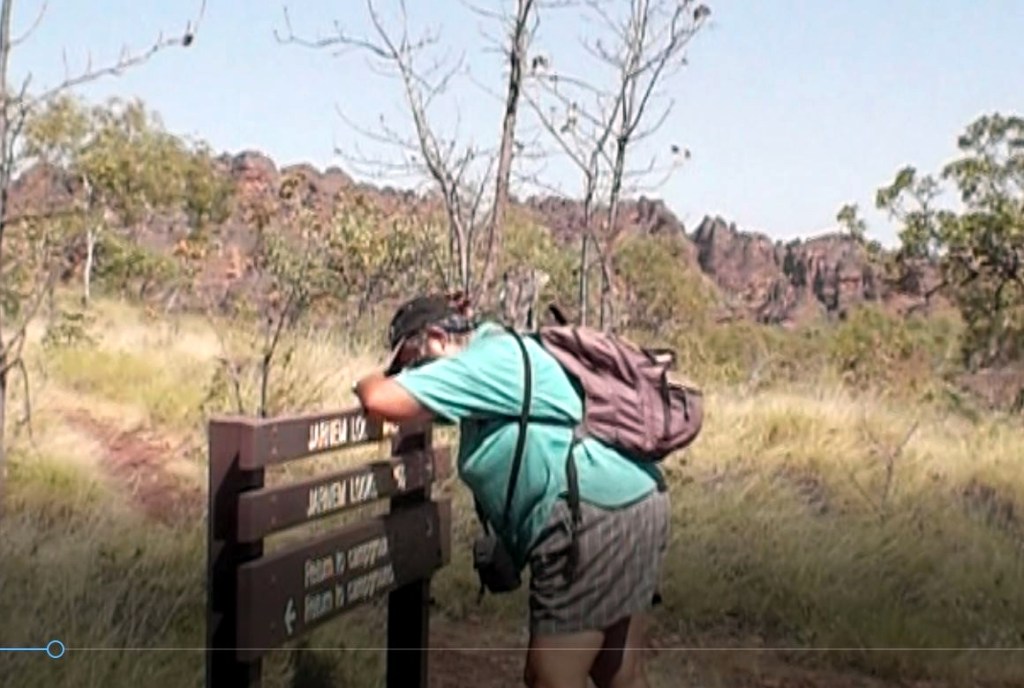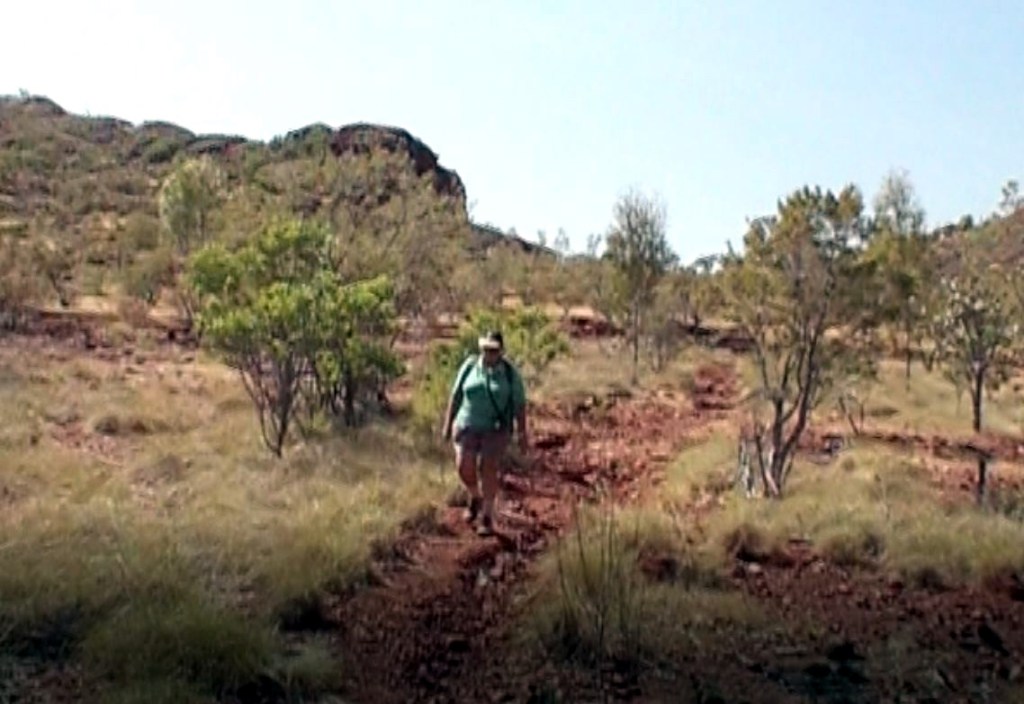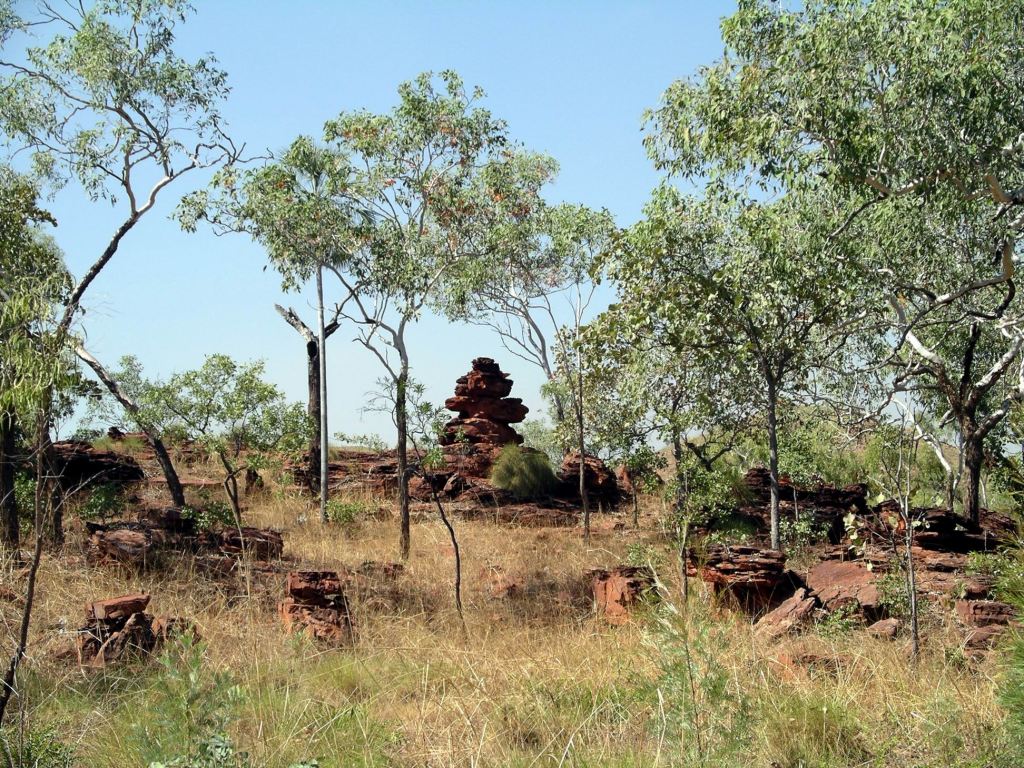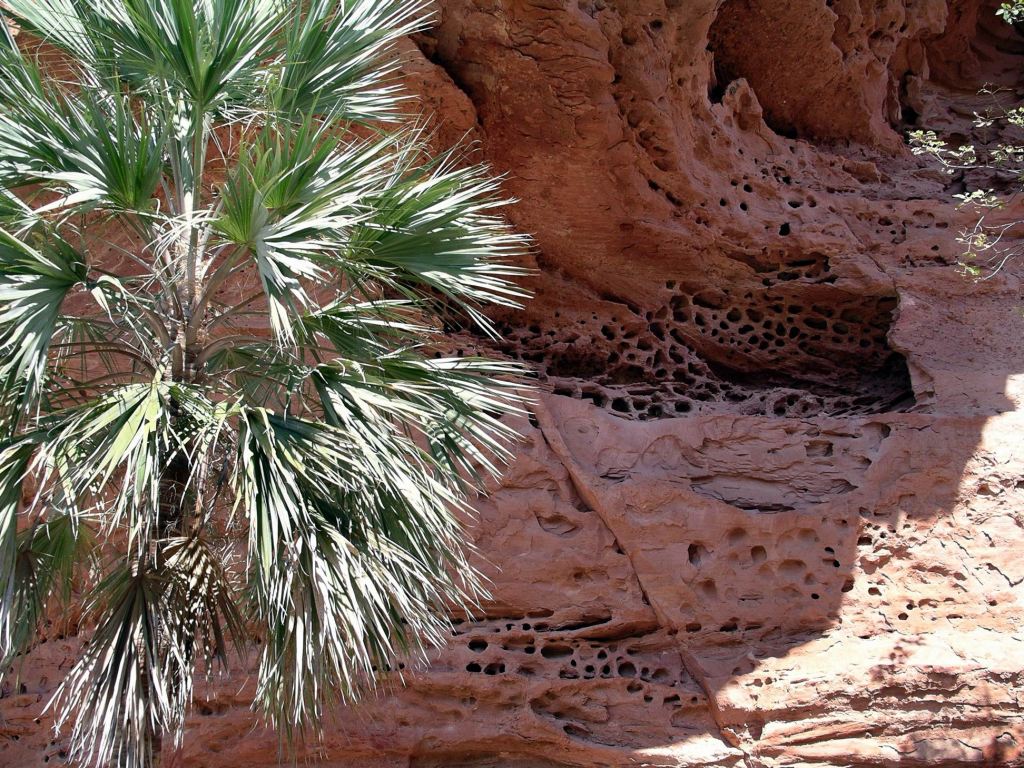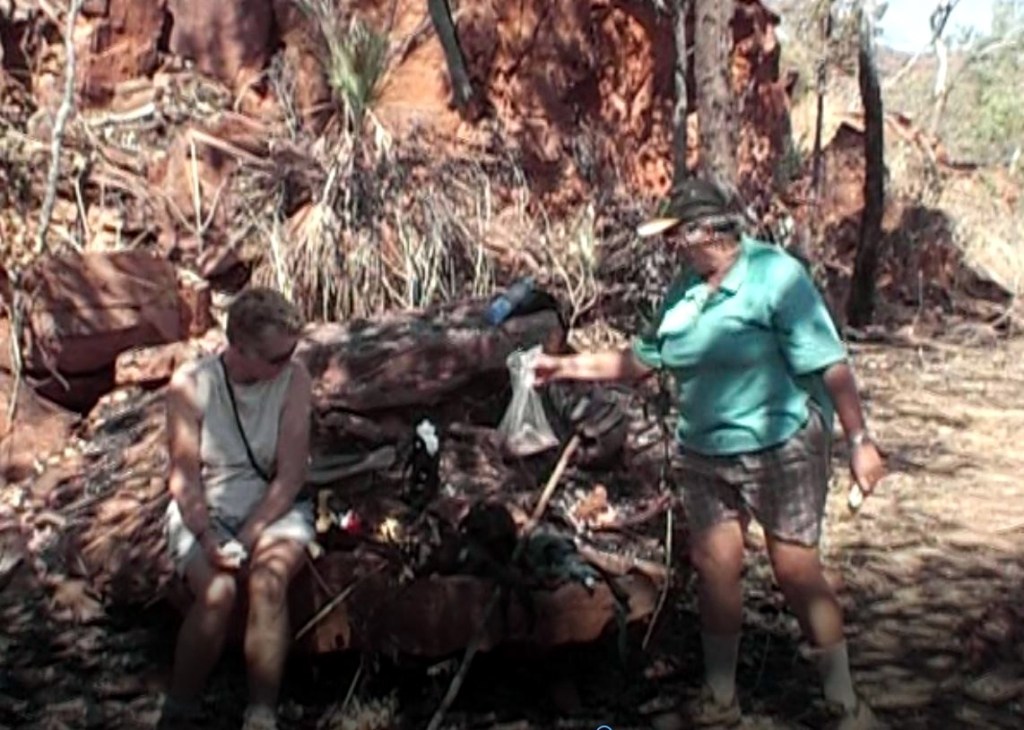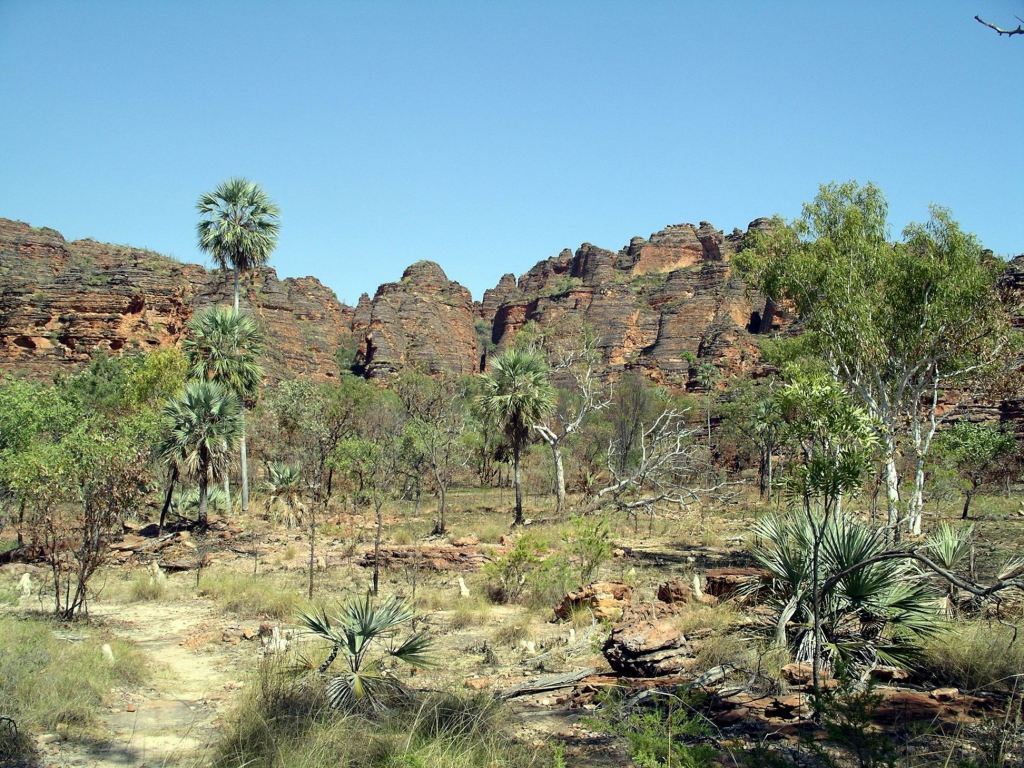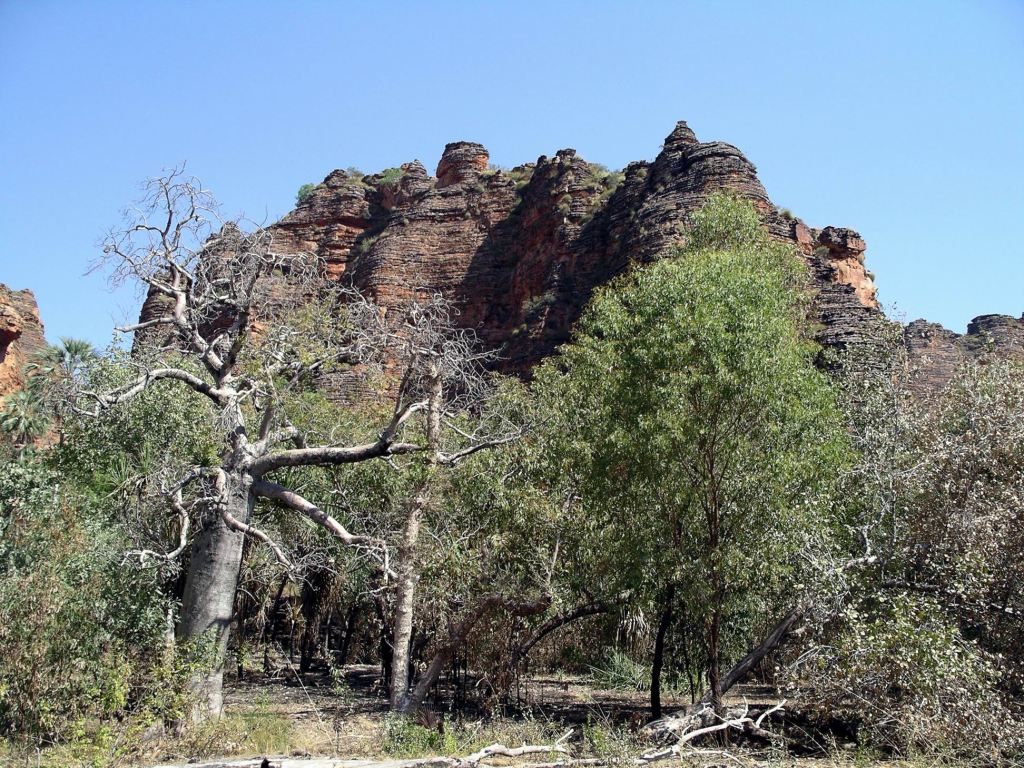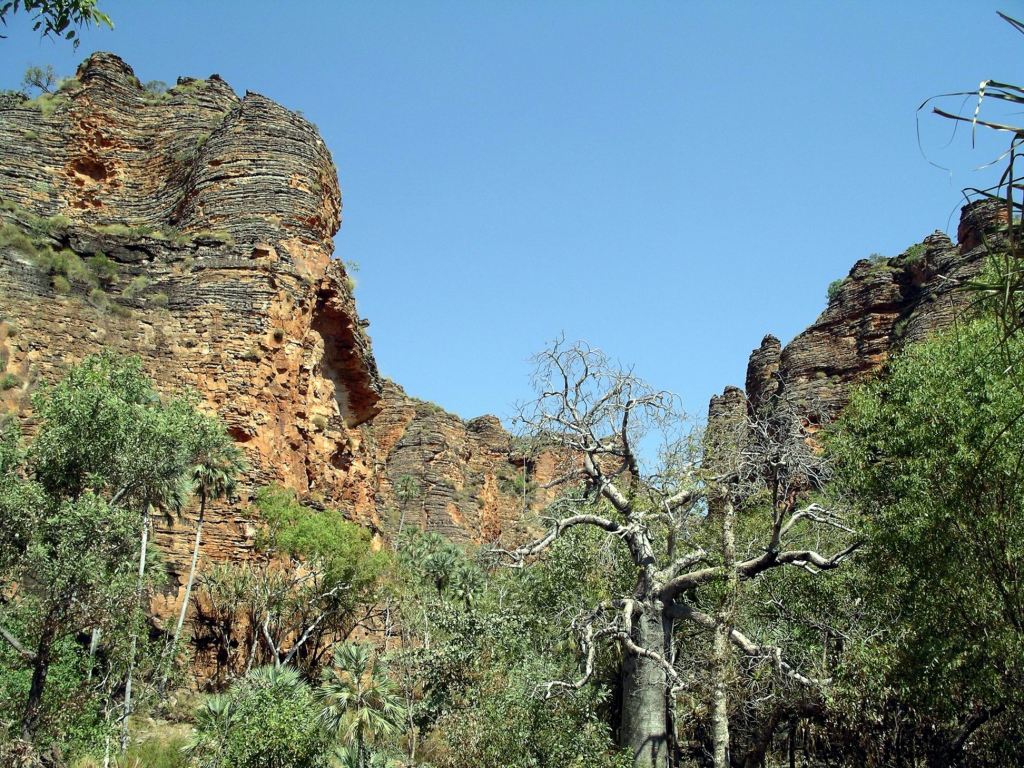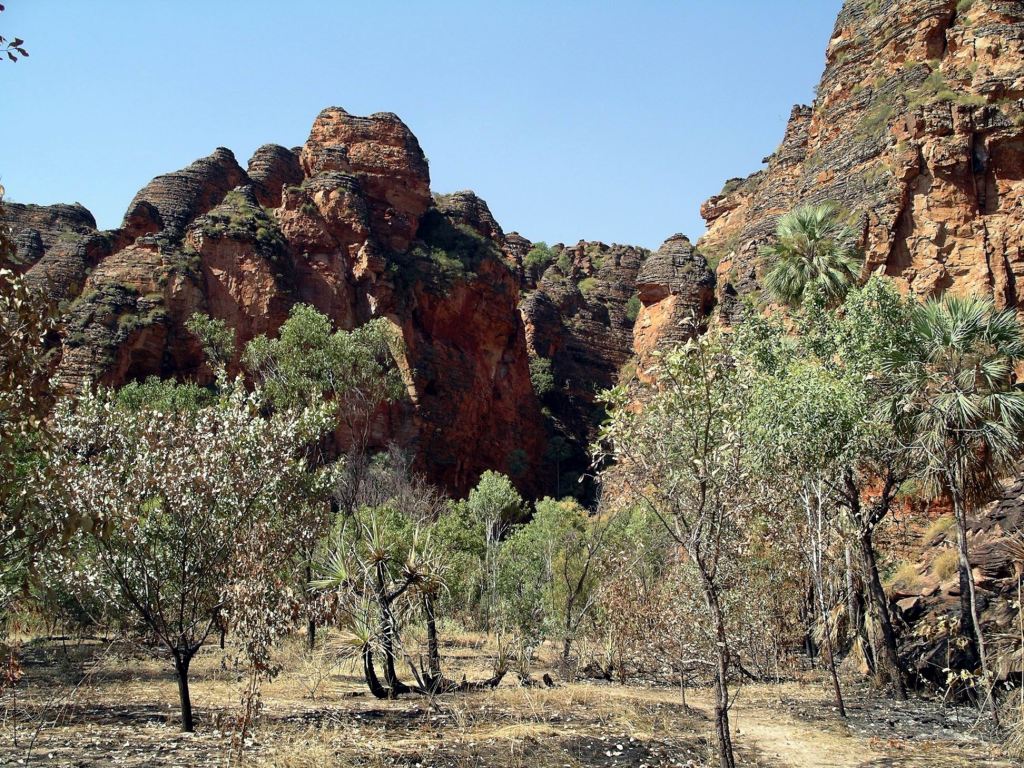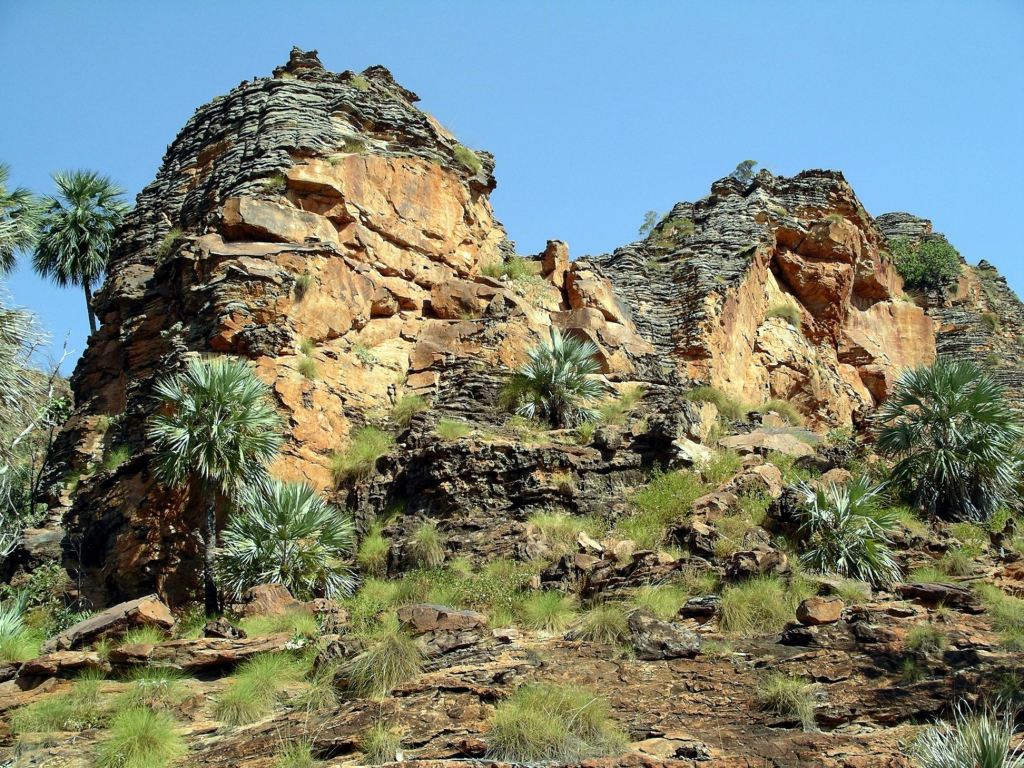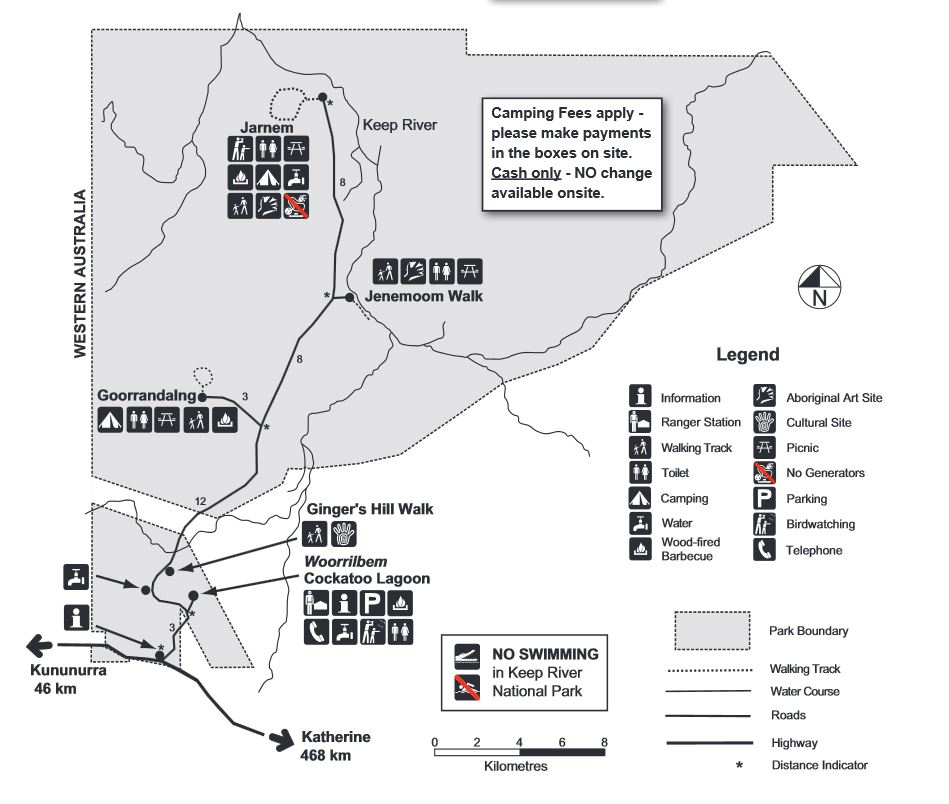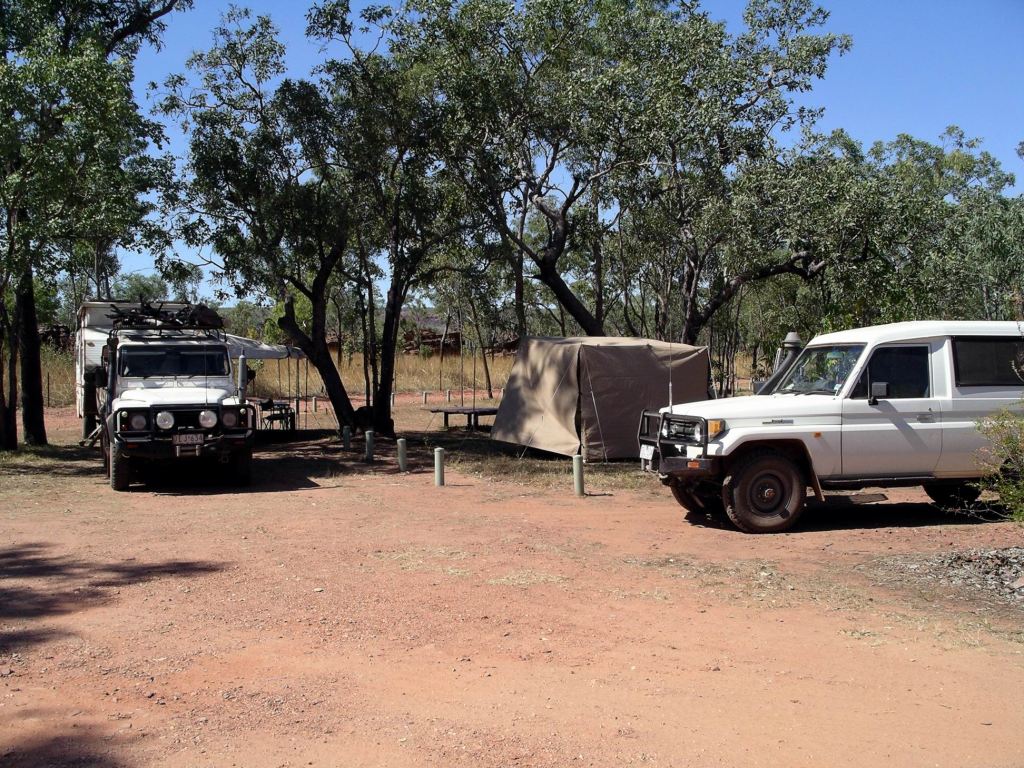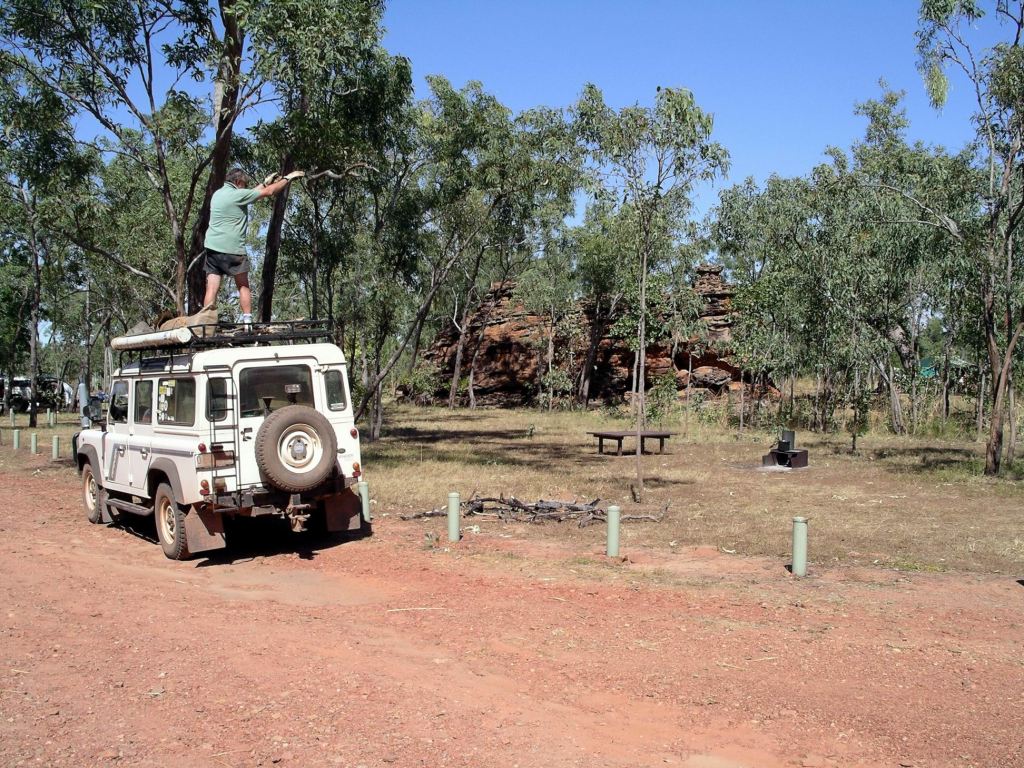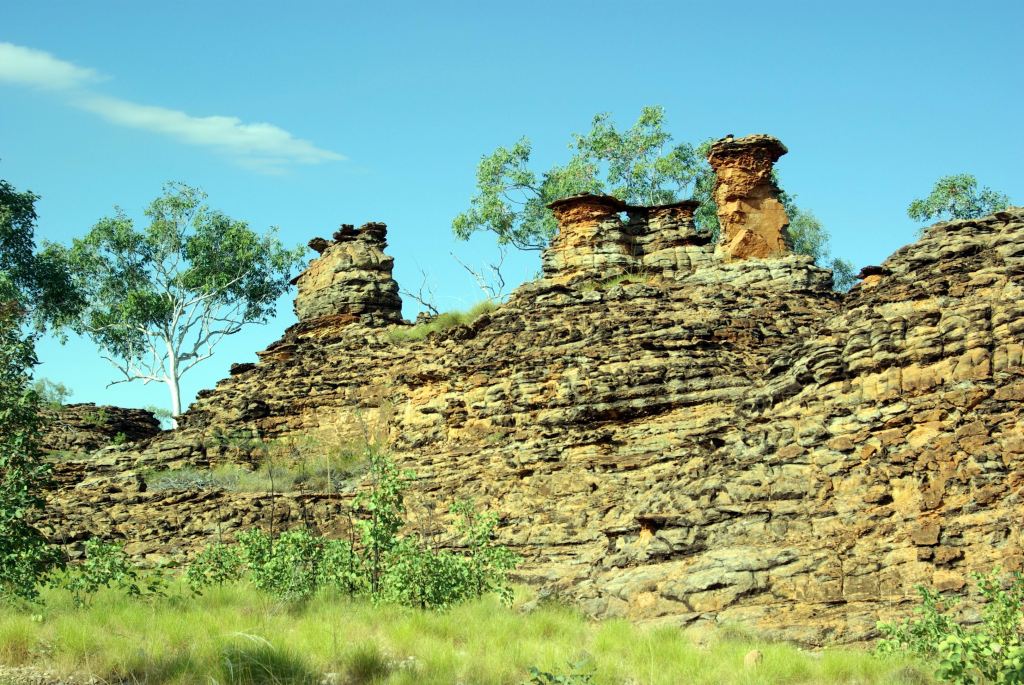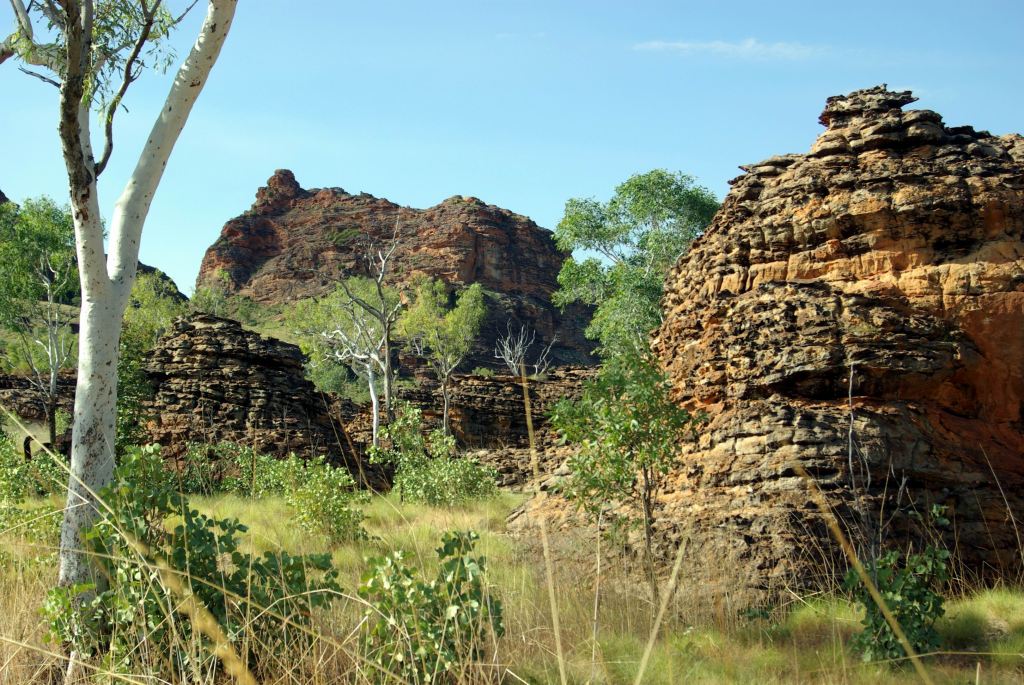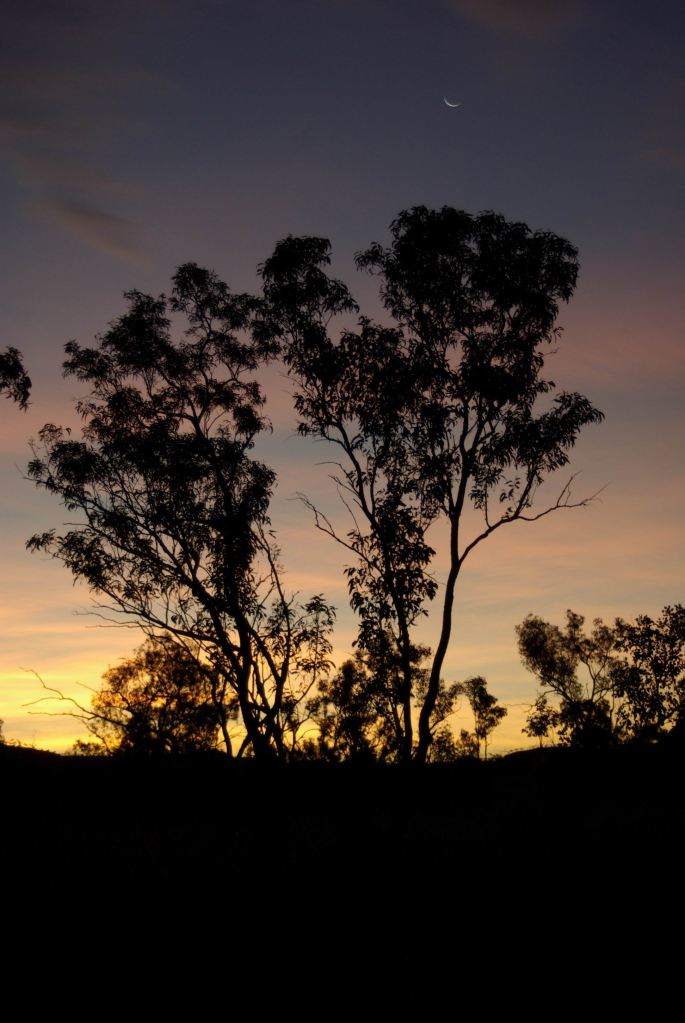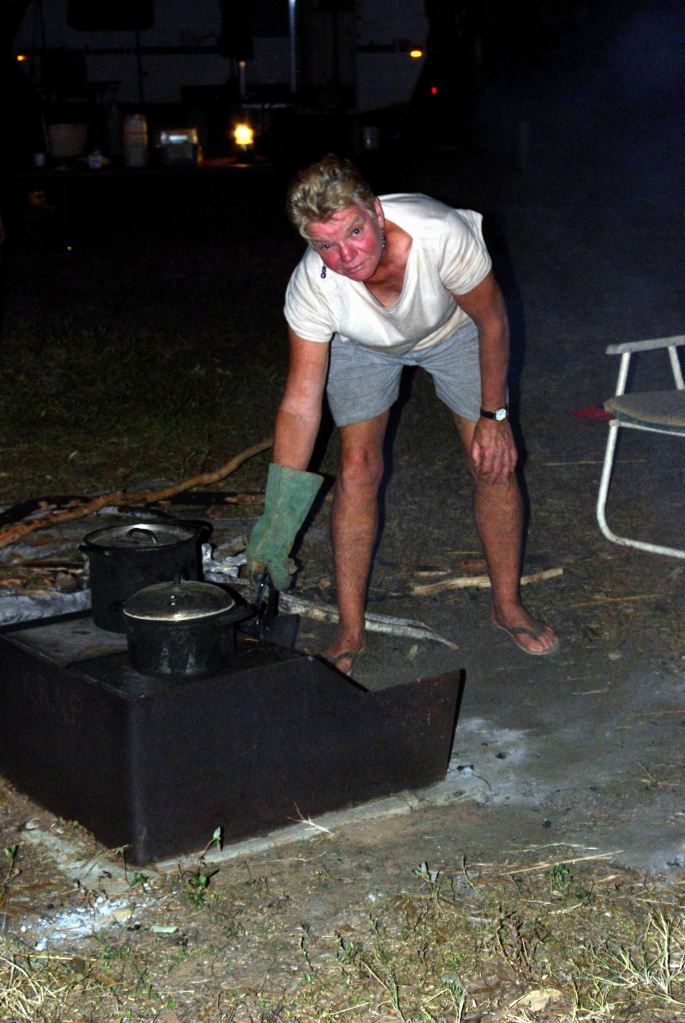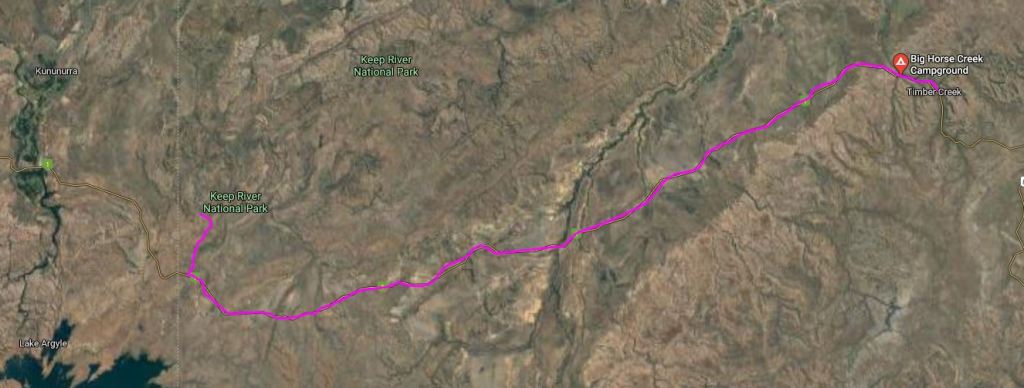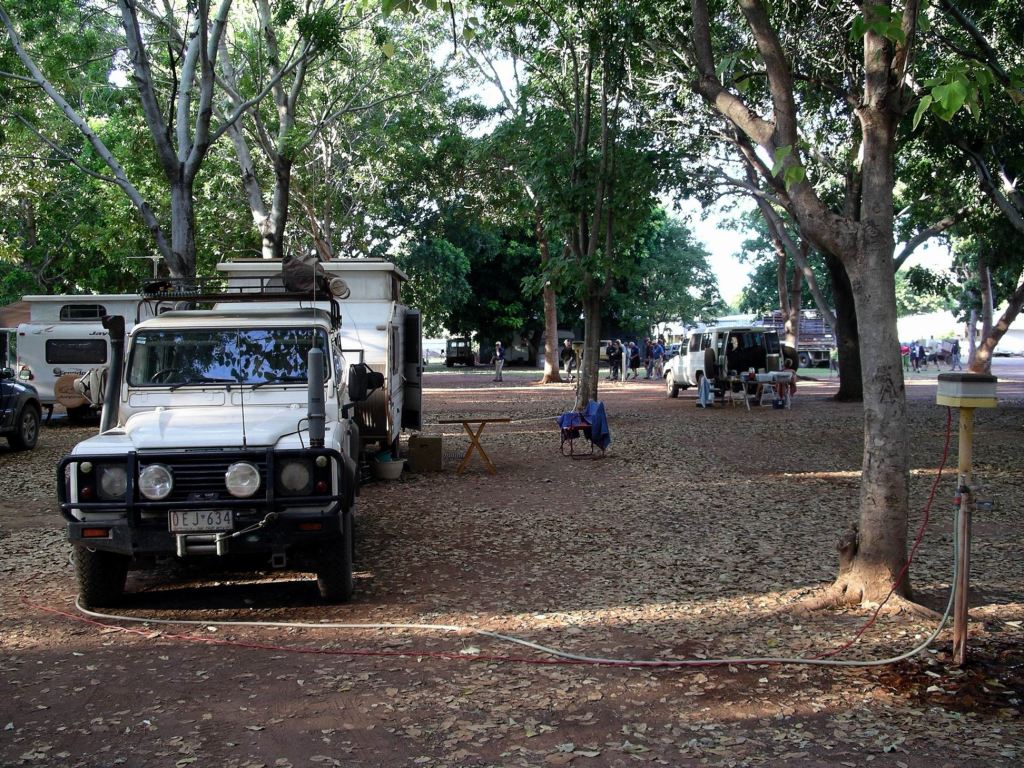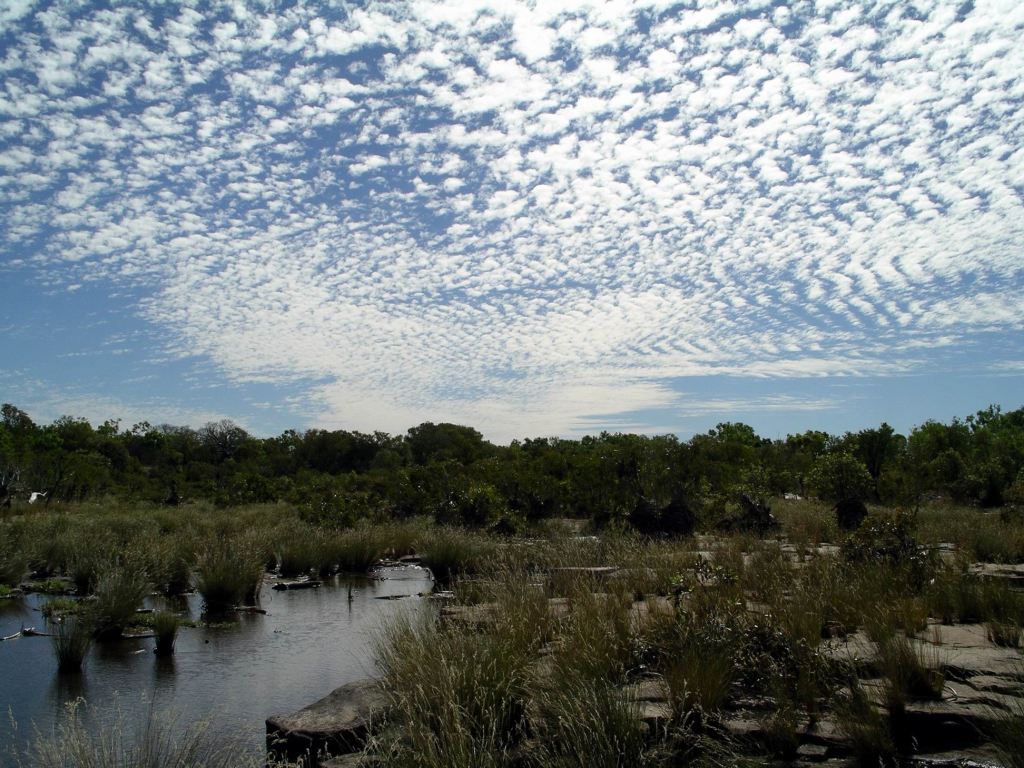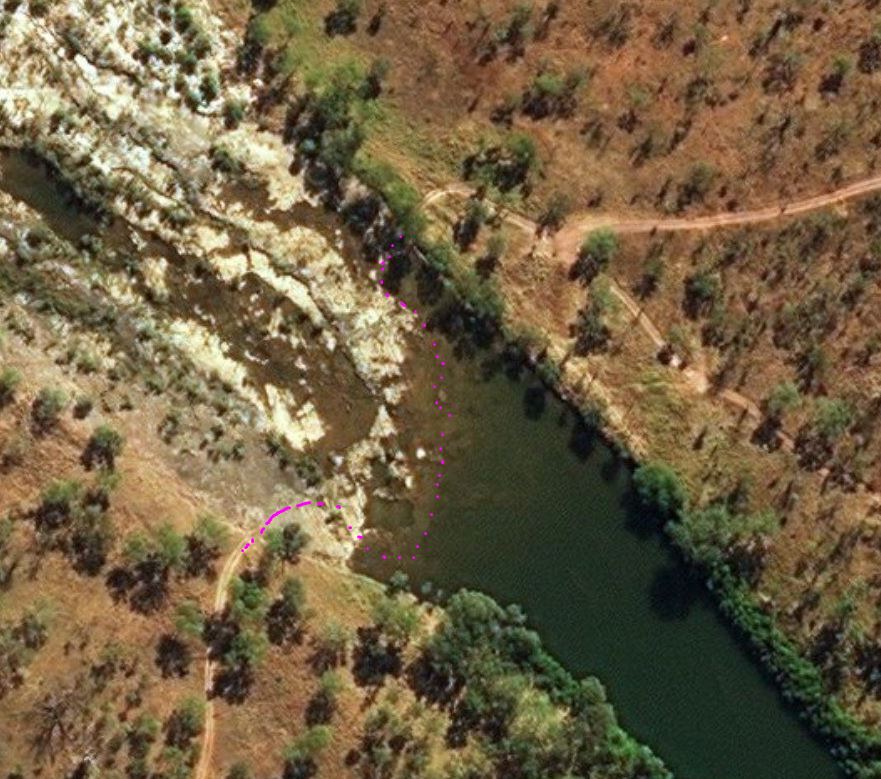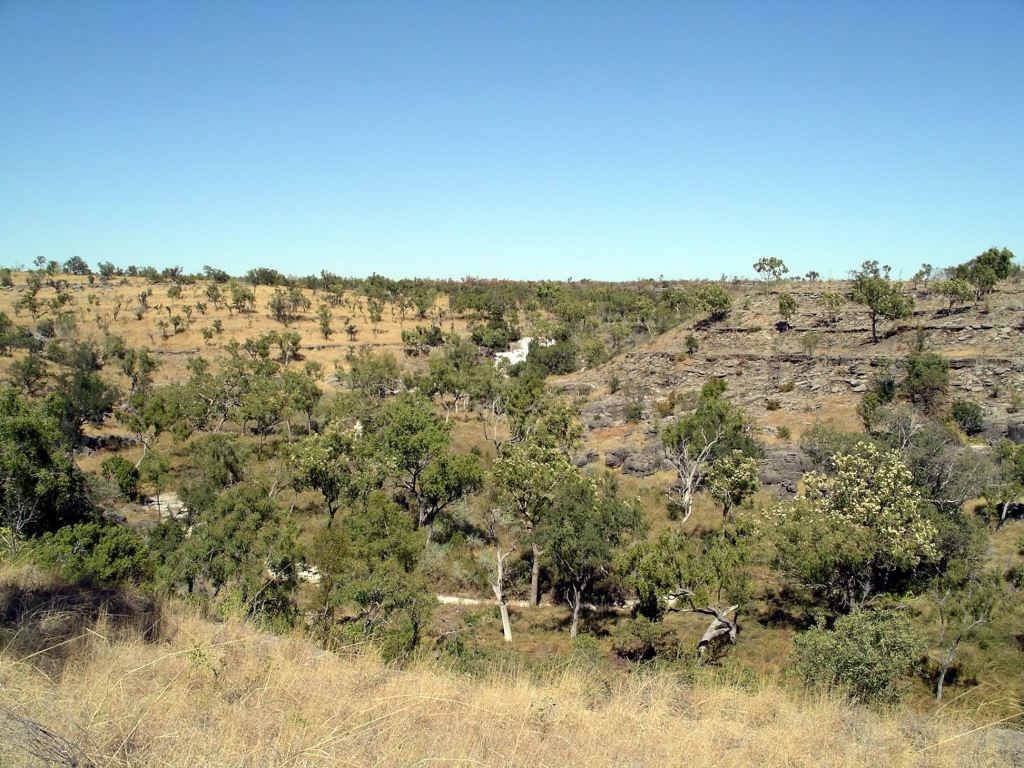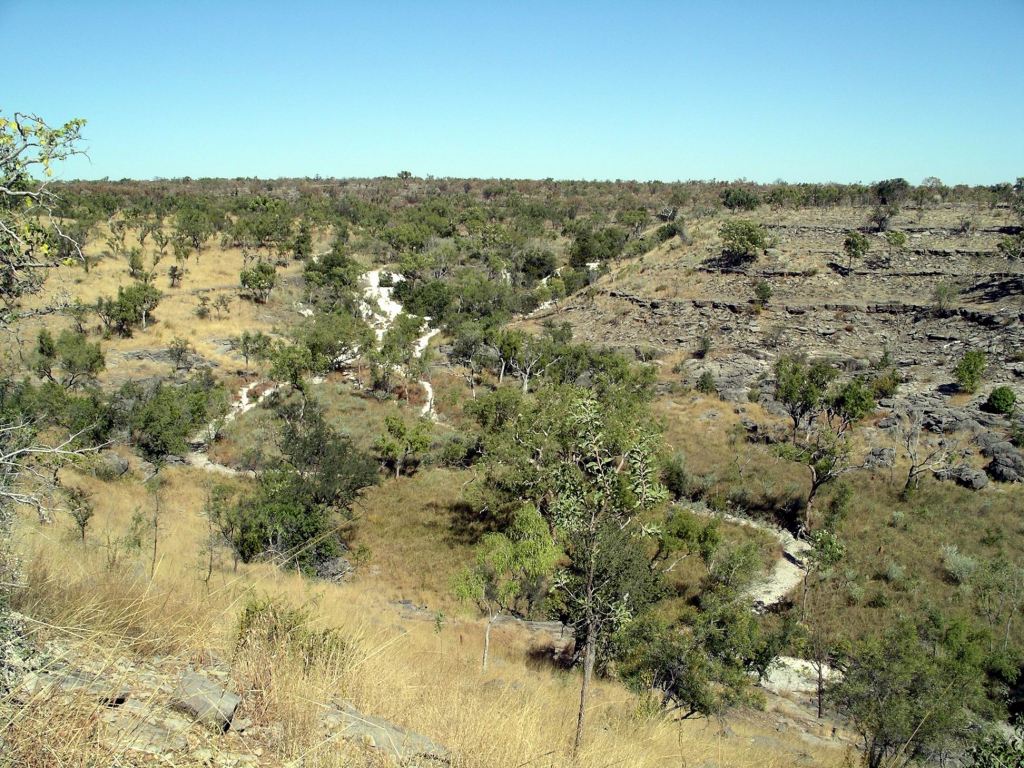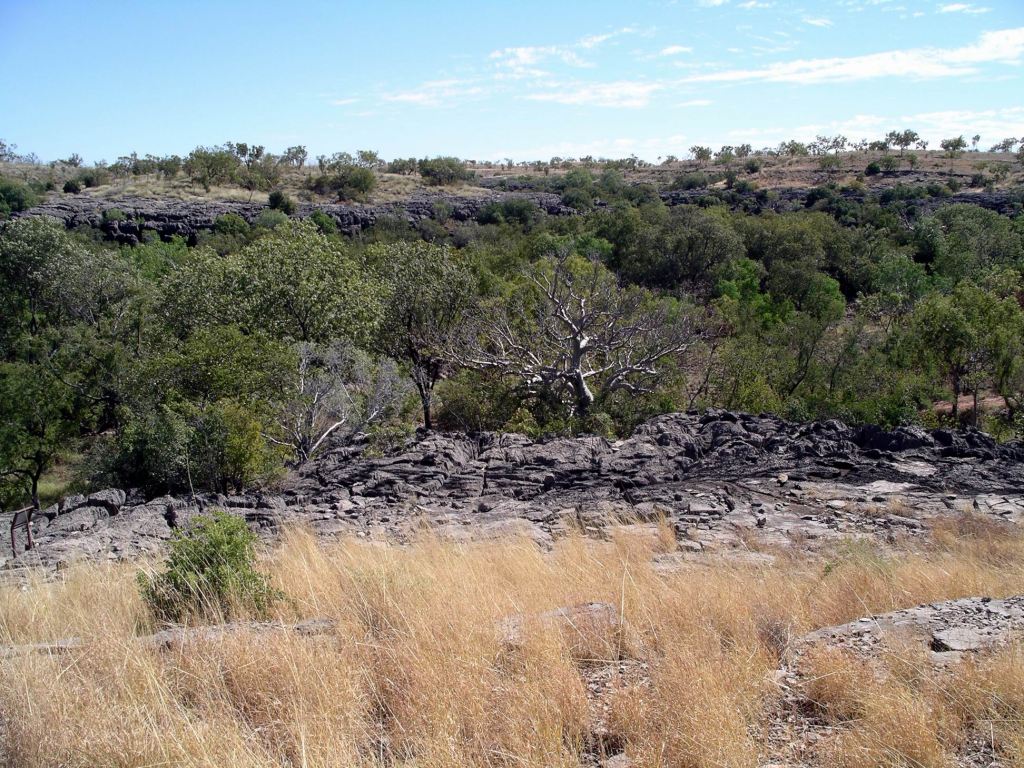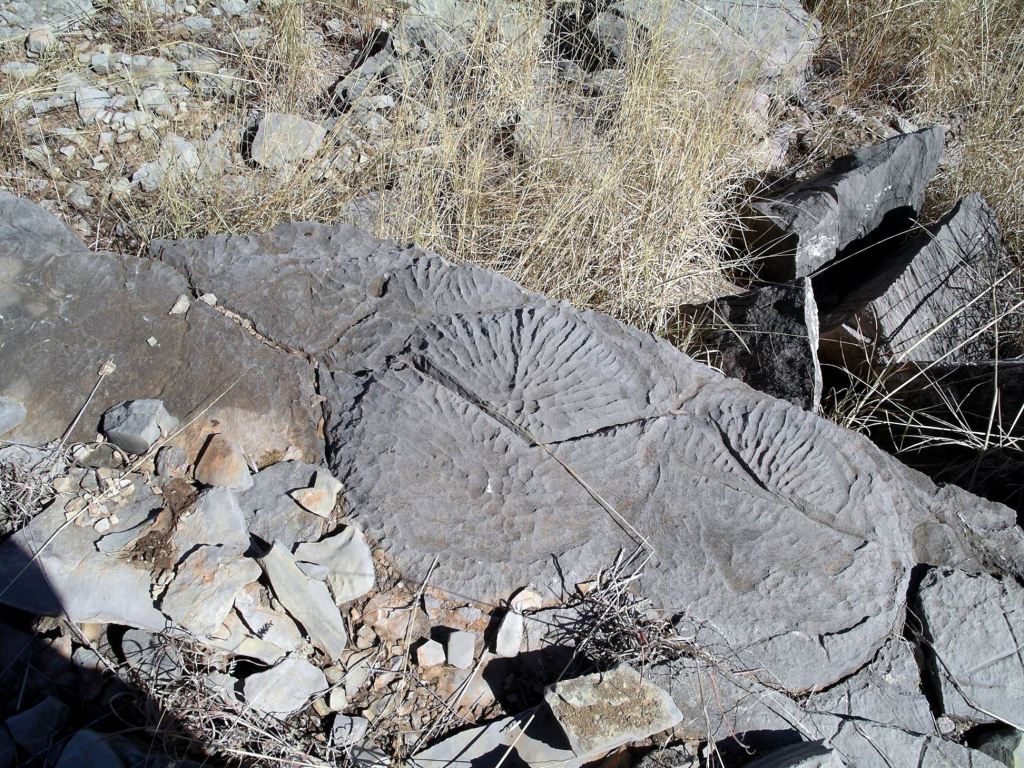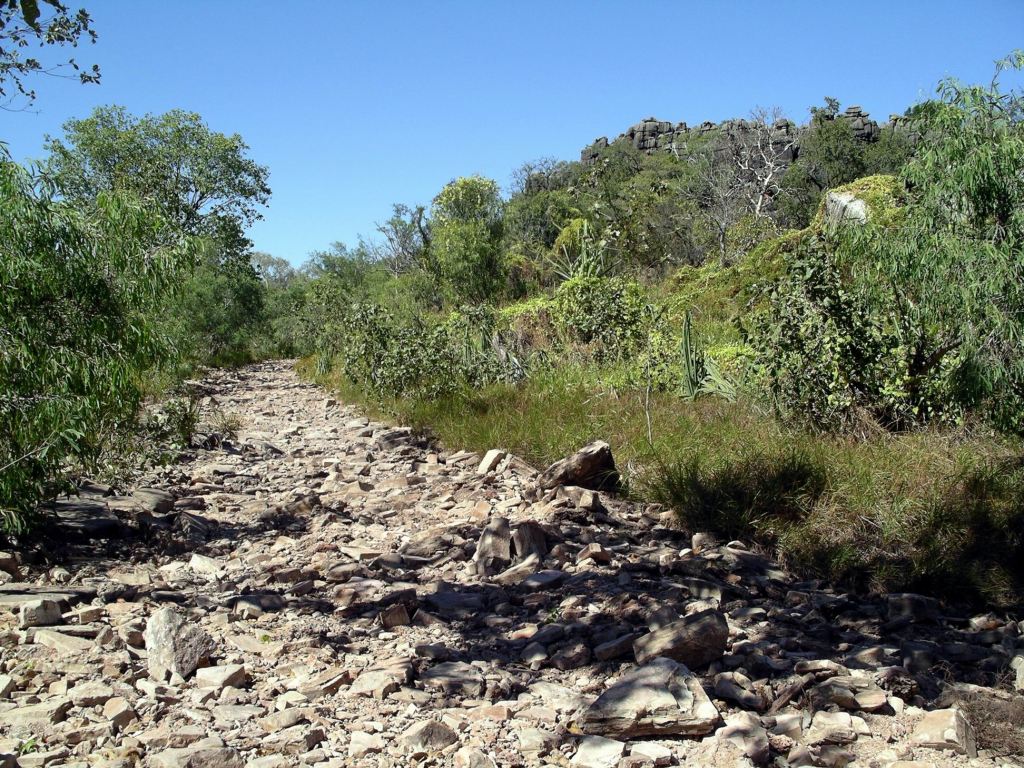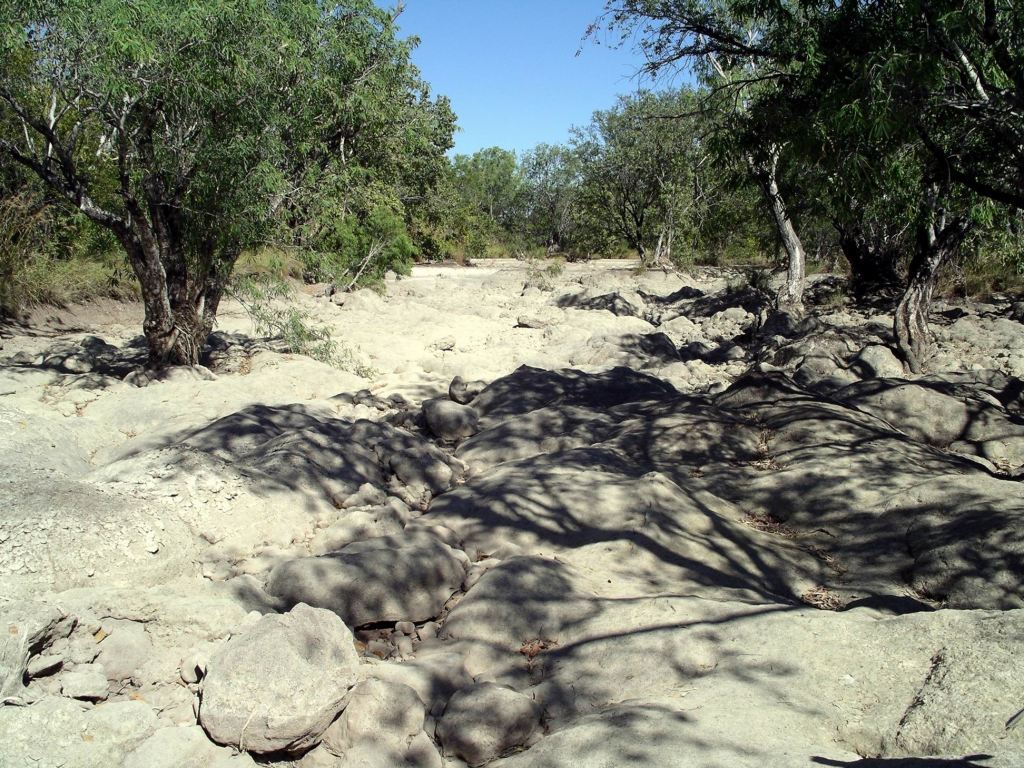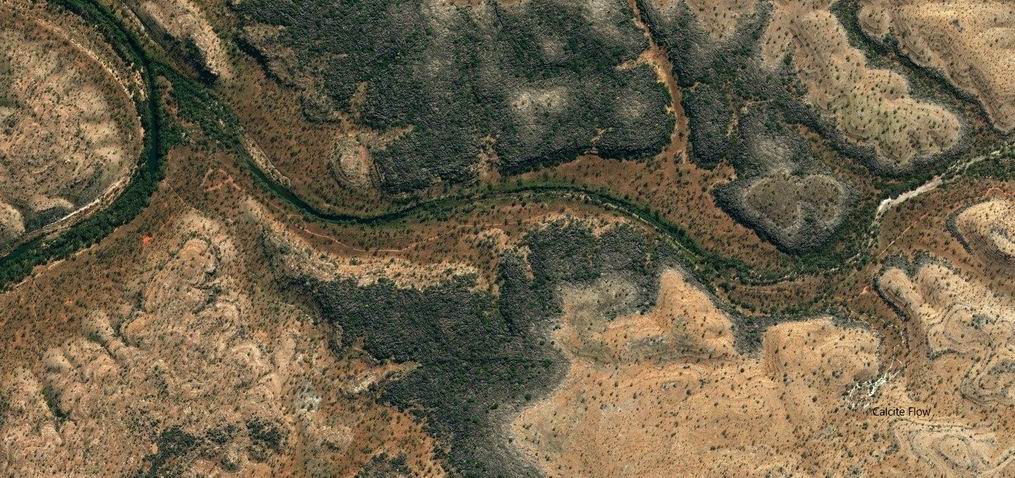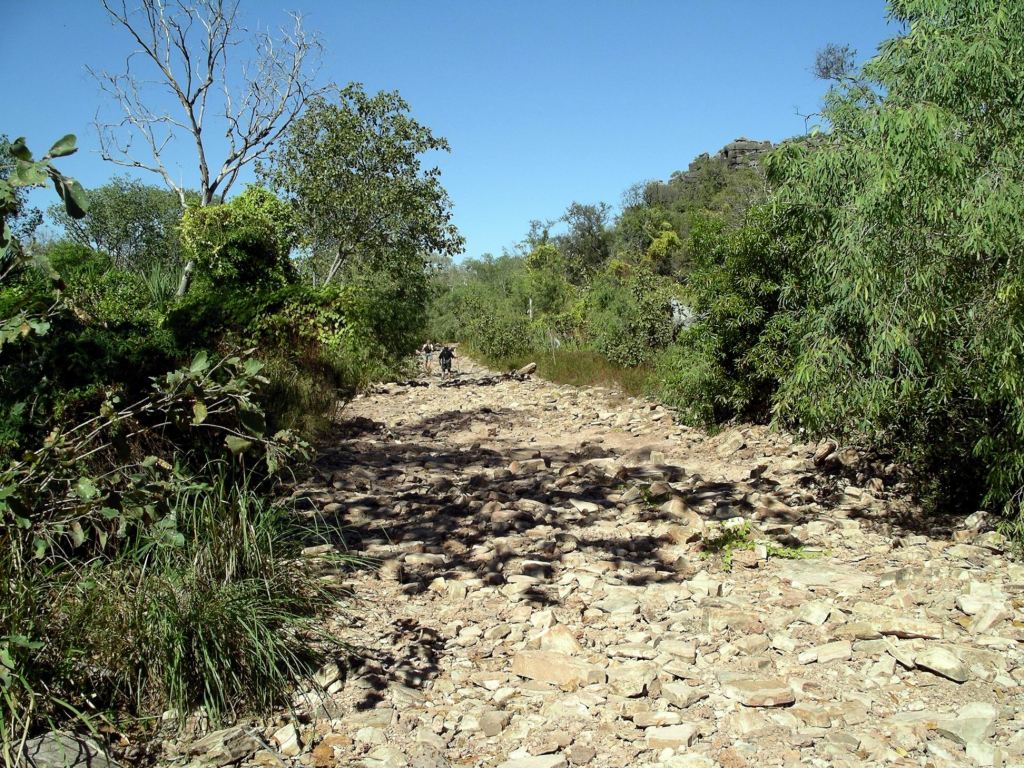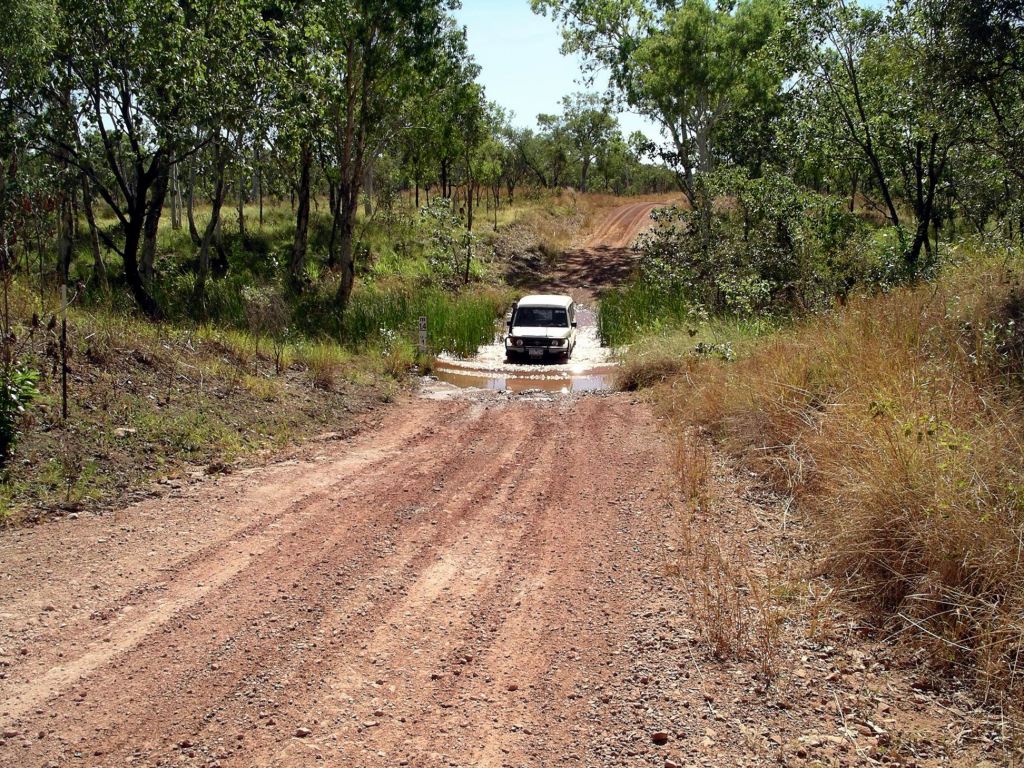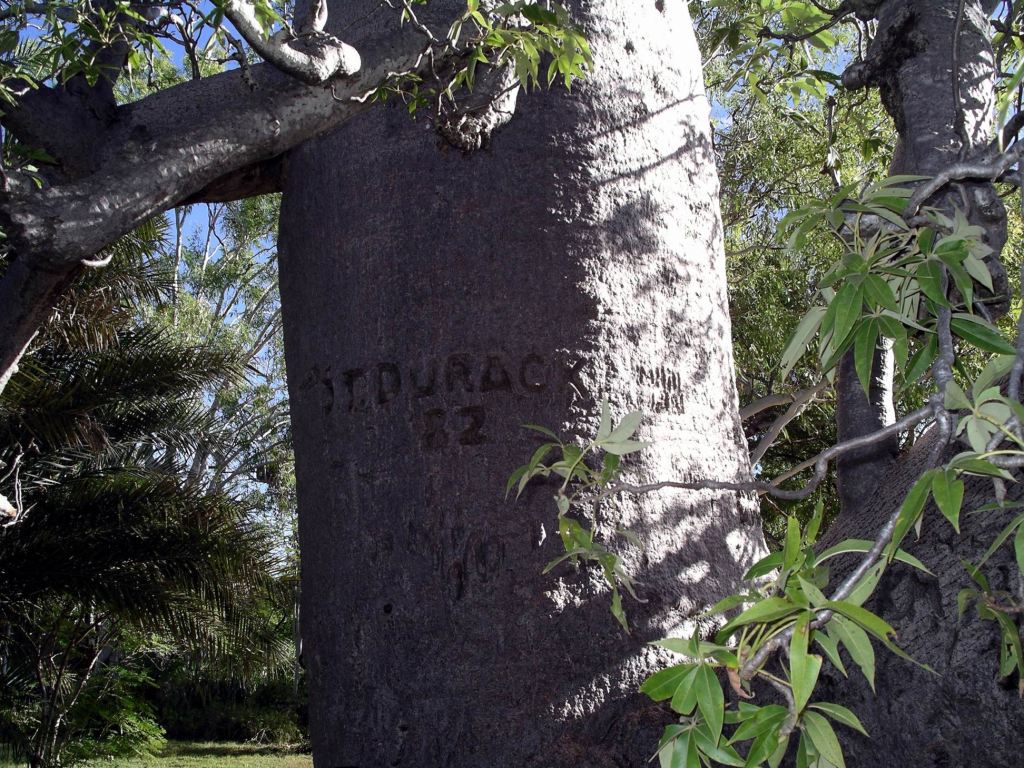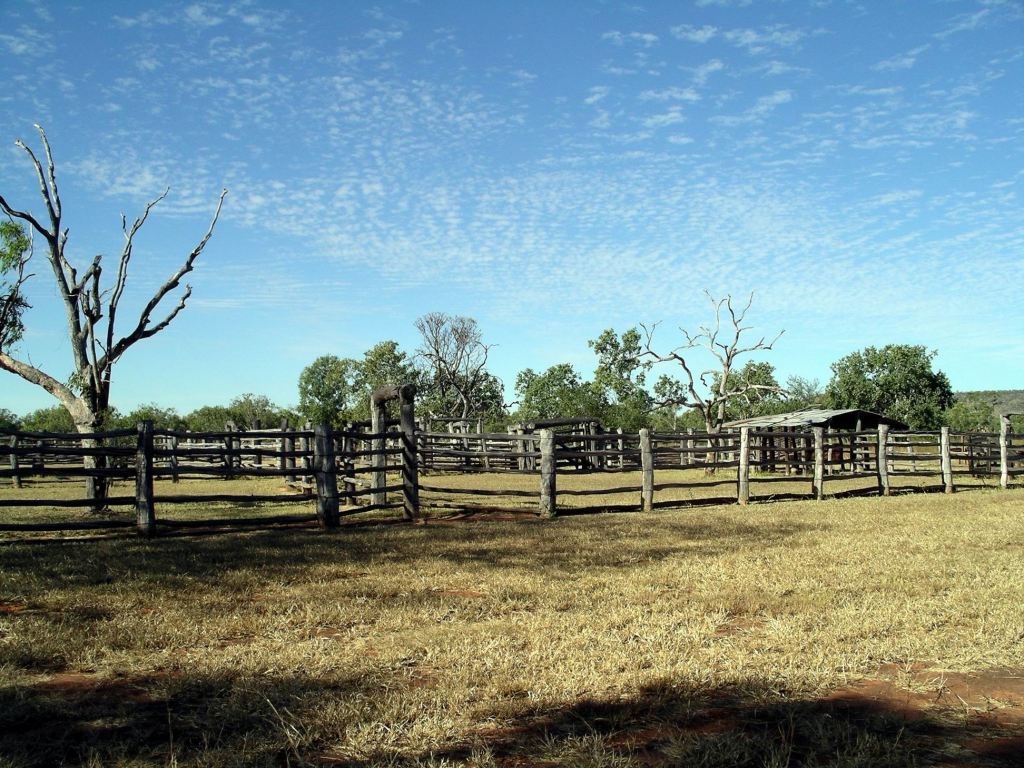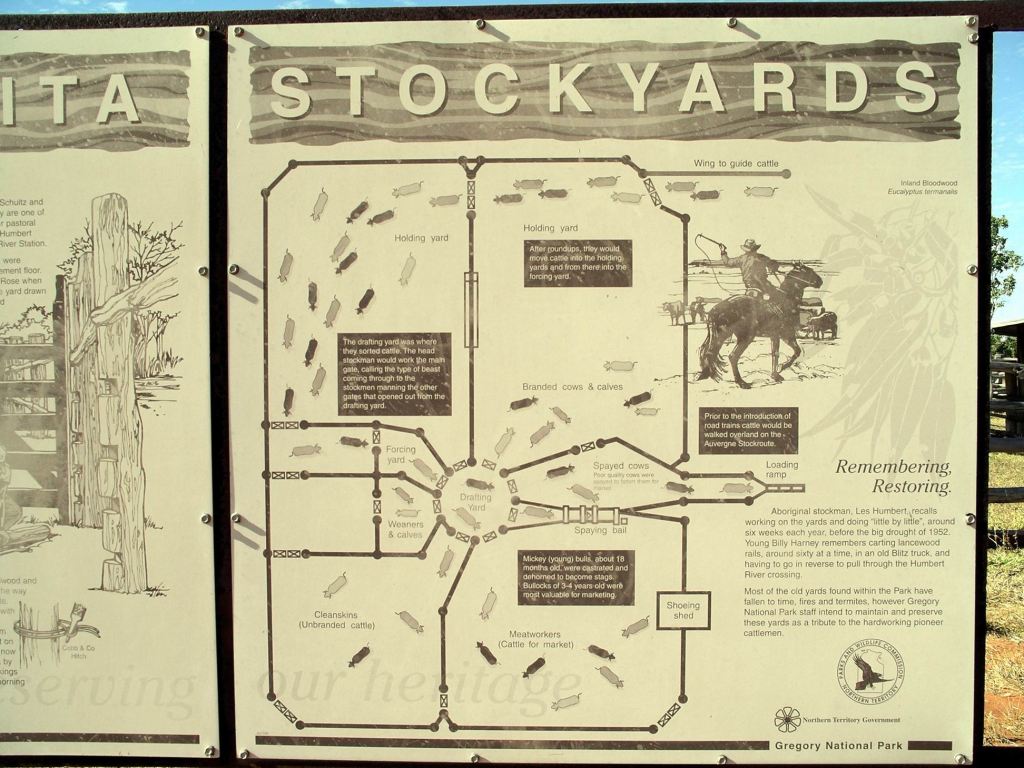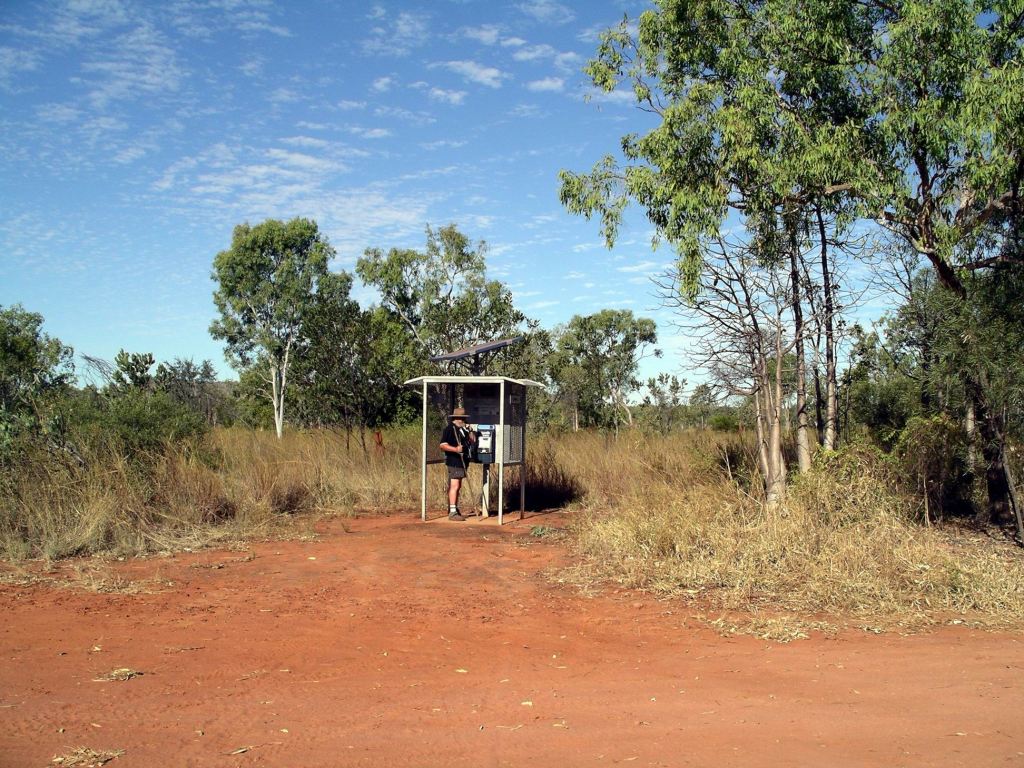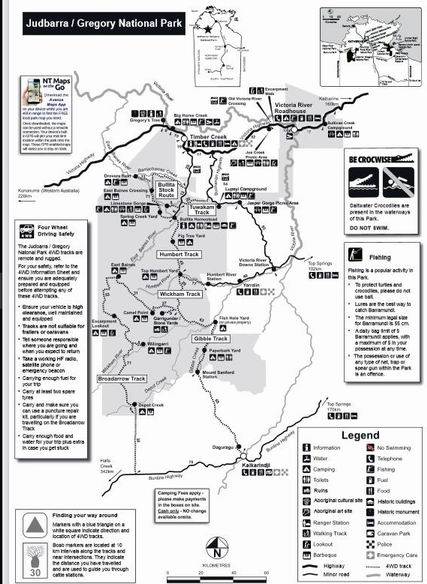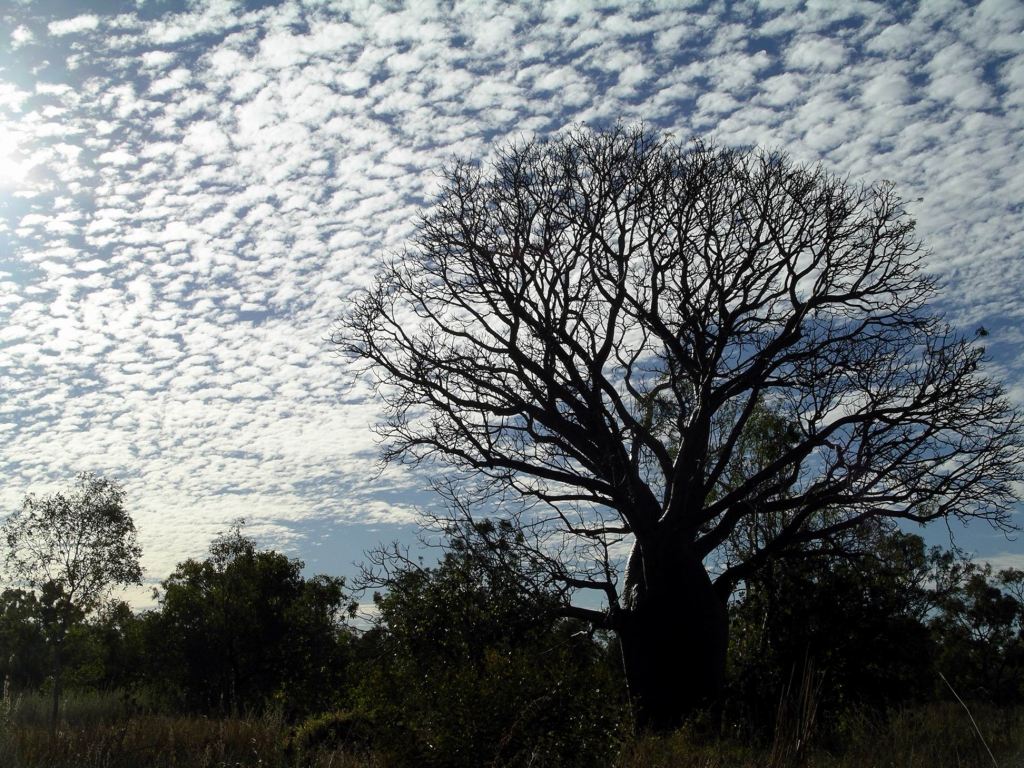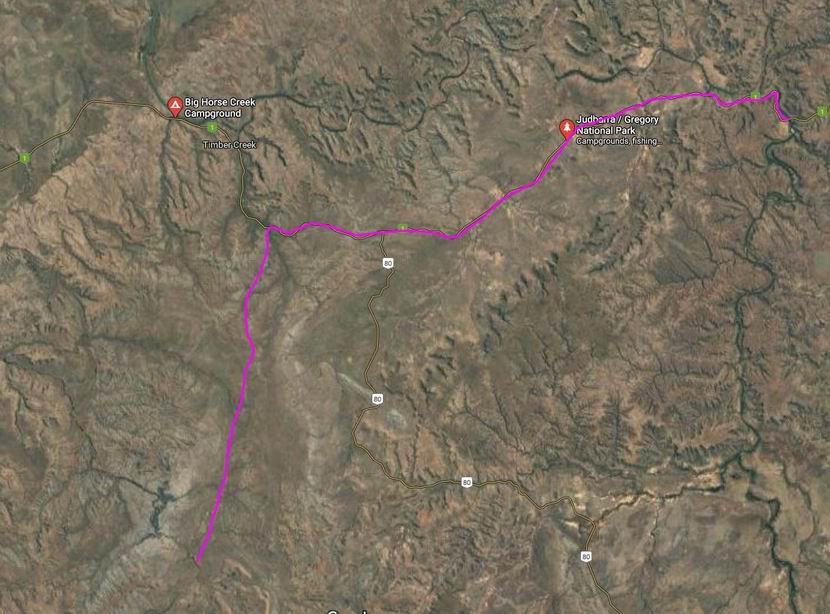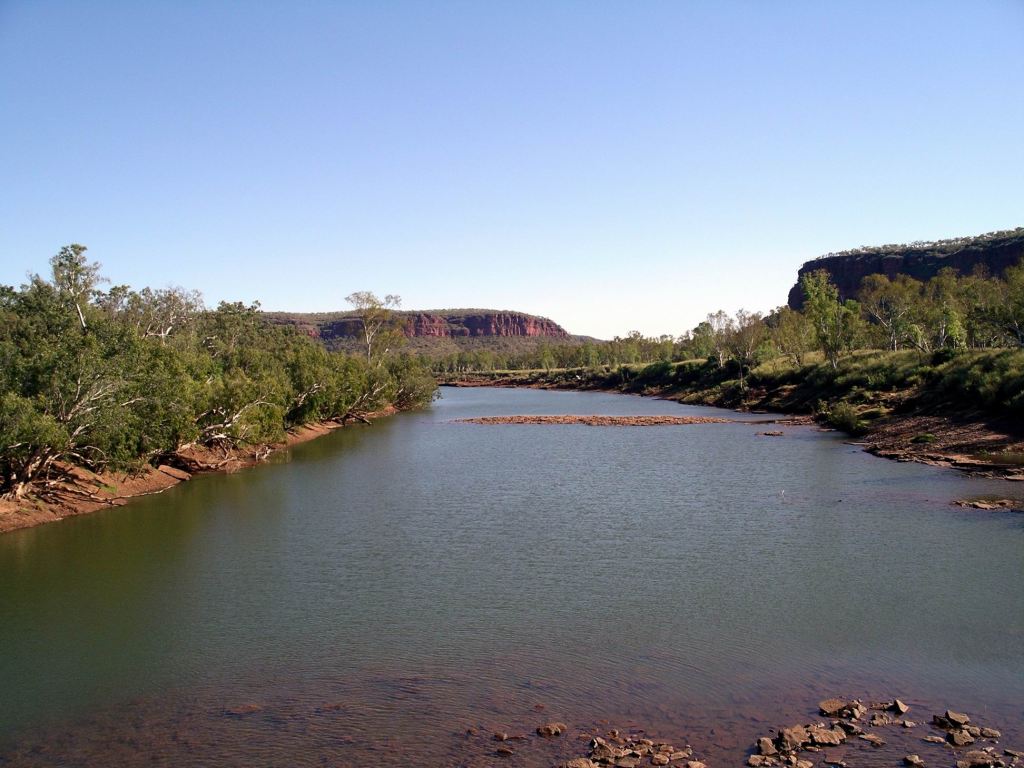WEDNESDAY 20 JUNE KEEP RIVER TO KUNUNURRA 70kms
We woke to continuing rain and a very damp camp. That meant we were not sure about our plans to leave here today.

Just after breakfast, the Ranger arrived. He informed us that we’d had 60mm of rain. Whilst it didn’t sound like much, in those terms, was much more impressive when translated to two and a half inches! No wonder the camp was damp!
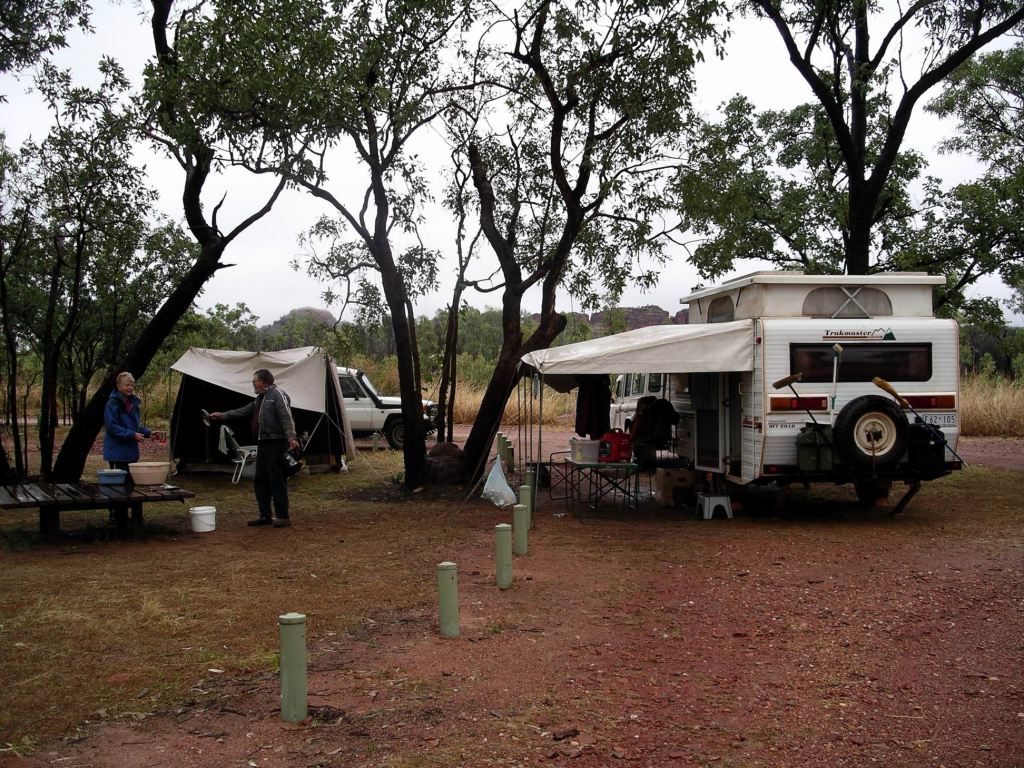
The rain event was widespread over the Kimberley, he said – an intense low pressure system that snuck in from up Indonesia way.
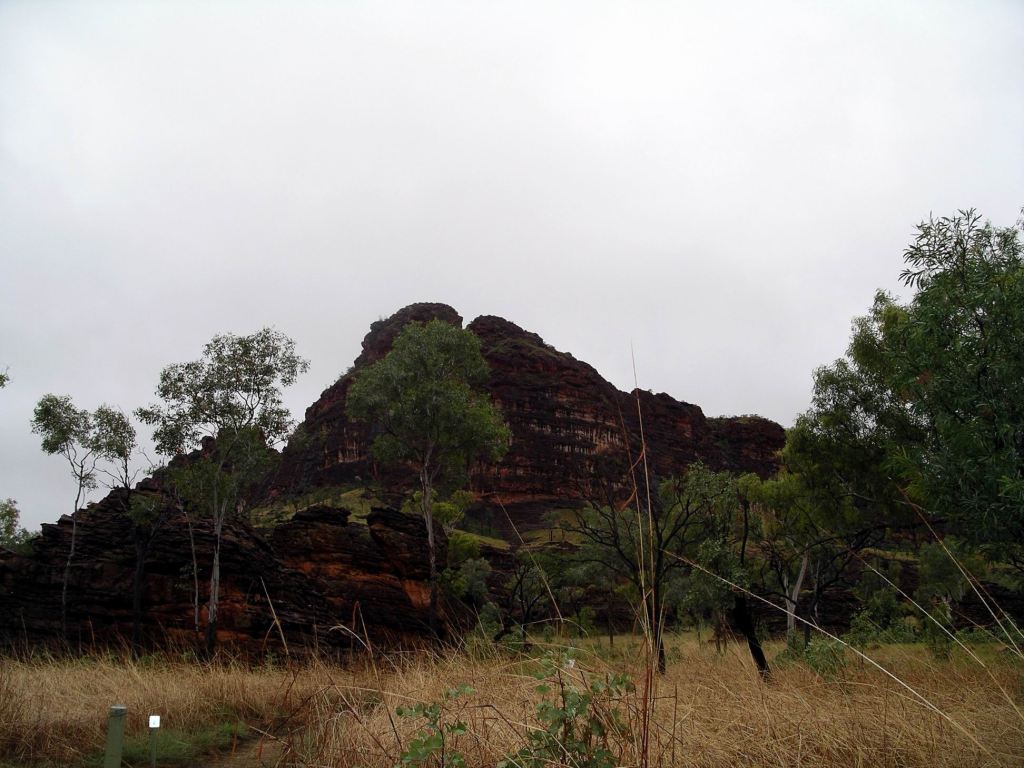
He declared all the Park roads closed, effective immediately. However, he said that he would escort anyone who wanted to leave, who had a proper 4WD outfit – vehicle and van – out of the Park. That was us, and only us. Everyone else had to stay here until the Park roads were opened again. I had a feeling that could be quite a while.
We had already begun the pack up, in case, so it did not take us long to be ready to go. Wet van awning was bundled up and laid on plastic on the van floor. M bundled up her living tent and it went onto roof rack.
The Ranger waited patiently for us.
The track was slushy on top, but there was a good firm base underneath, so we did not slide around at all. That was very good, as sliding about with the van on the back could have been somewhat hairy!
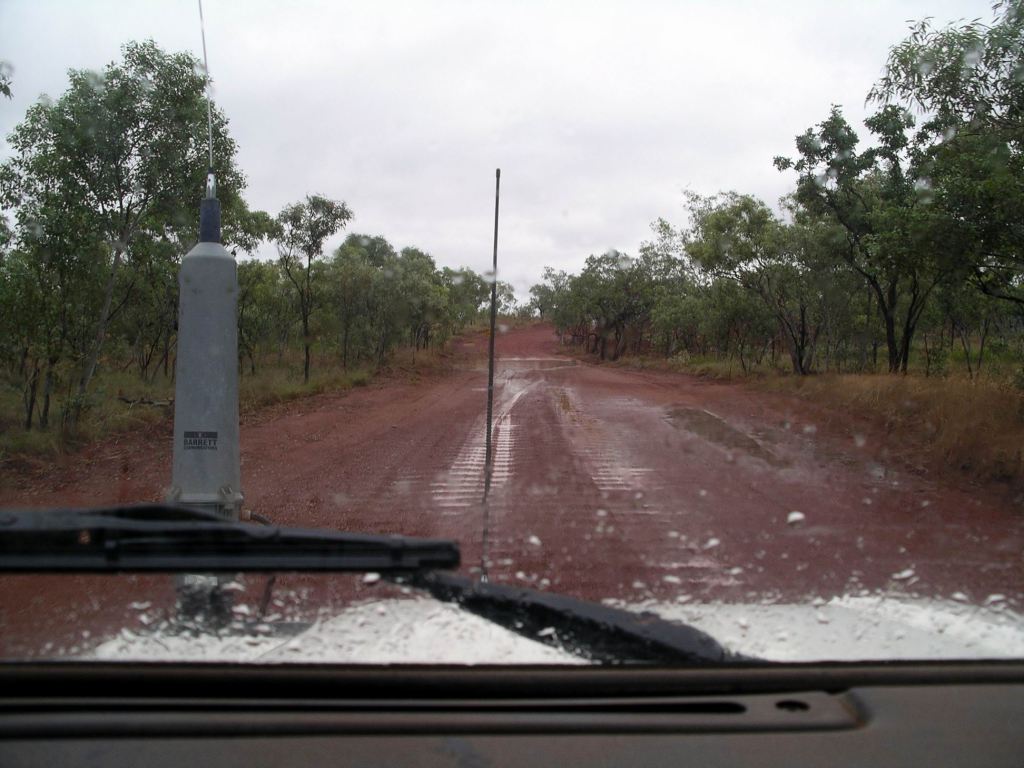
There were several places with water over the road, including a couple of causeways that were already flowing fairly fast.
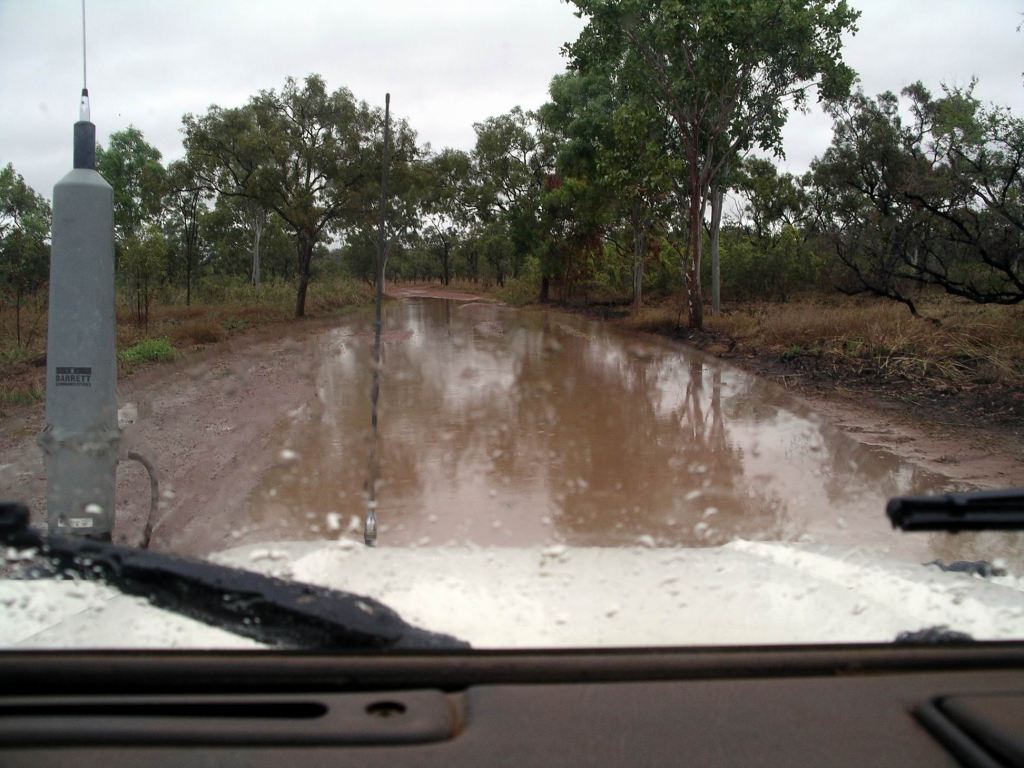
We made it to the highway with no dramas and waved goodbye to our very helpful Ranger friend.
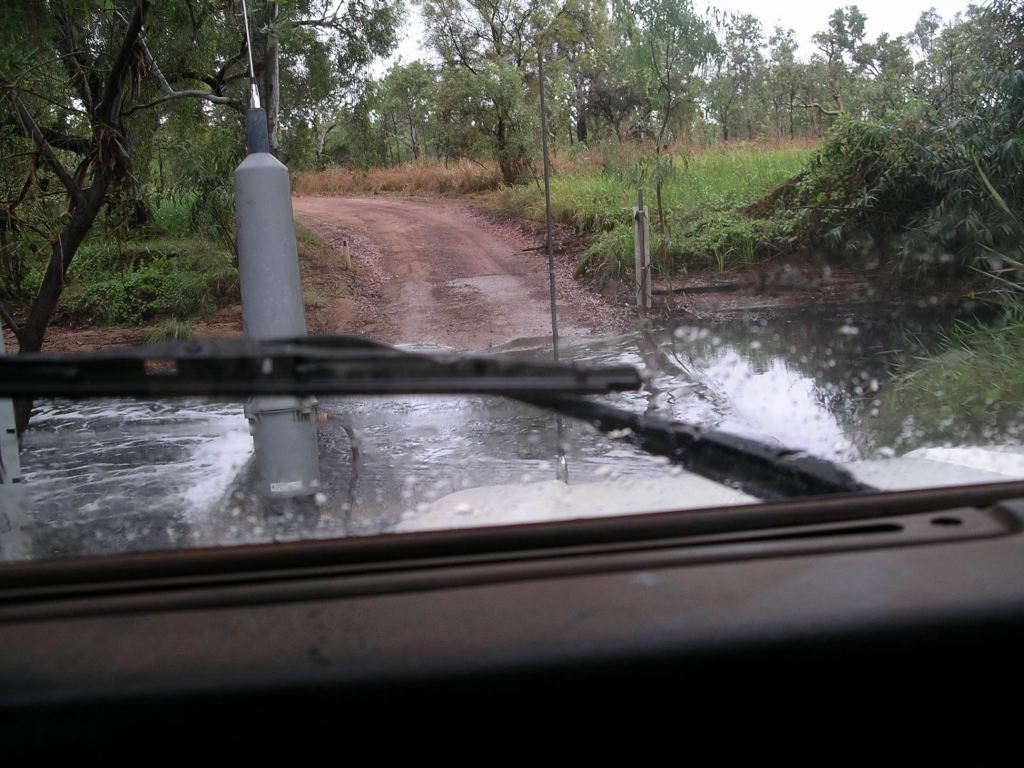
As soon as I knew we were leaving the camp, I’d phoned Kununurra and booked us into the Kimberleyland Caravan Park. I made a snap decision to book for two weeks. My thinking was that, if all the dirt roads of the Kimberley region were affected by this, it could be at least a week, and probably more, before they were open again. Travellers would keep arriving on the sealed roads, so there would be a great rush when the roads re-opened. Two weeks could give us time to wait out that initial rush that would see everywhere crowded.
At least, we would know we had a place to be for that time!
The rain seemed to be easing somewhat by the time we got to Kununurra.
Now we were in WA – and there before we’d actually departed camp, thanks to changing time zones!
Our powered site at Kimberleyland cost $26 a night, with each seventh night free. We were close to the amenity block.
The park was generally well set up, but the sites did vary in quality. Our site was rather wet underfoot – especially after John had washed today’s accumulated mud off the rig!
M was given a smaller site, not far from us, that was partly also a walkway.
But we were happy to be in there at all. By early afternoon, people were being turned away, even from the informal unpowered camp area by the lake shore – itself rather soggy. There was no accommodation of any sort left in Kununurra, we heard.
All dirt roads in the Kimberley were indeed closed, as was the Tanami Track south from Halls Creek into the NT. Groups of travellers were stranded in lots of places, including in the Bungles and up on the Mitchell Plateau, and all the camping places along the Gibb River Road.
The caravan park had a frontage to Lily Creek Lagoon, an offshoot of Lake Kununurra. It would be really attractive in good weather. It was within walking distance of the town centre shops, initially through a pleasant park.
Setting up camp, manhandling large expanses of wet and dirty canvas, was not fun! We tackled our awning first, then gave M a hand with her living tent.
After set up and lunch – stomachs still on NT time – drove to the town centre.
Collected our bag of mail from the PO. Went to the Visitor Centre and gathered some information from the displays. Stayed away from the service counter, which was busy with people looking for somewhere to stay! Did some food shopping at the supermarket. I was able to buy a newspaper and catch up with the world again.
Drove out of town on the Ivanhoe Road, to the north, through the irrigated farmland, to where we knew there was a produce packing centre and associated market stall. Bought some fruit and vegies there. But there was not the range and variety we’d found on previous visits.
Back to caravan park lifestyle – tea, followed by TV, laptops and reading, and trying to sleep with background caravan park noises – so much more intrusive than those of the bush. Well, most bush night noises – the beach thick knee (curlew) call can be incredibly intrusive!
